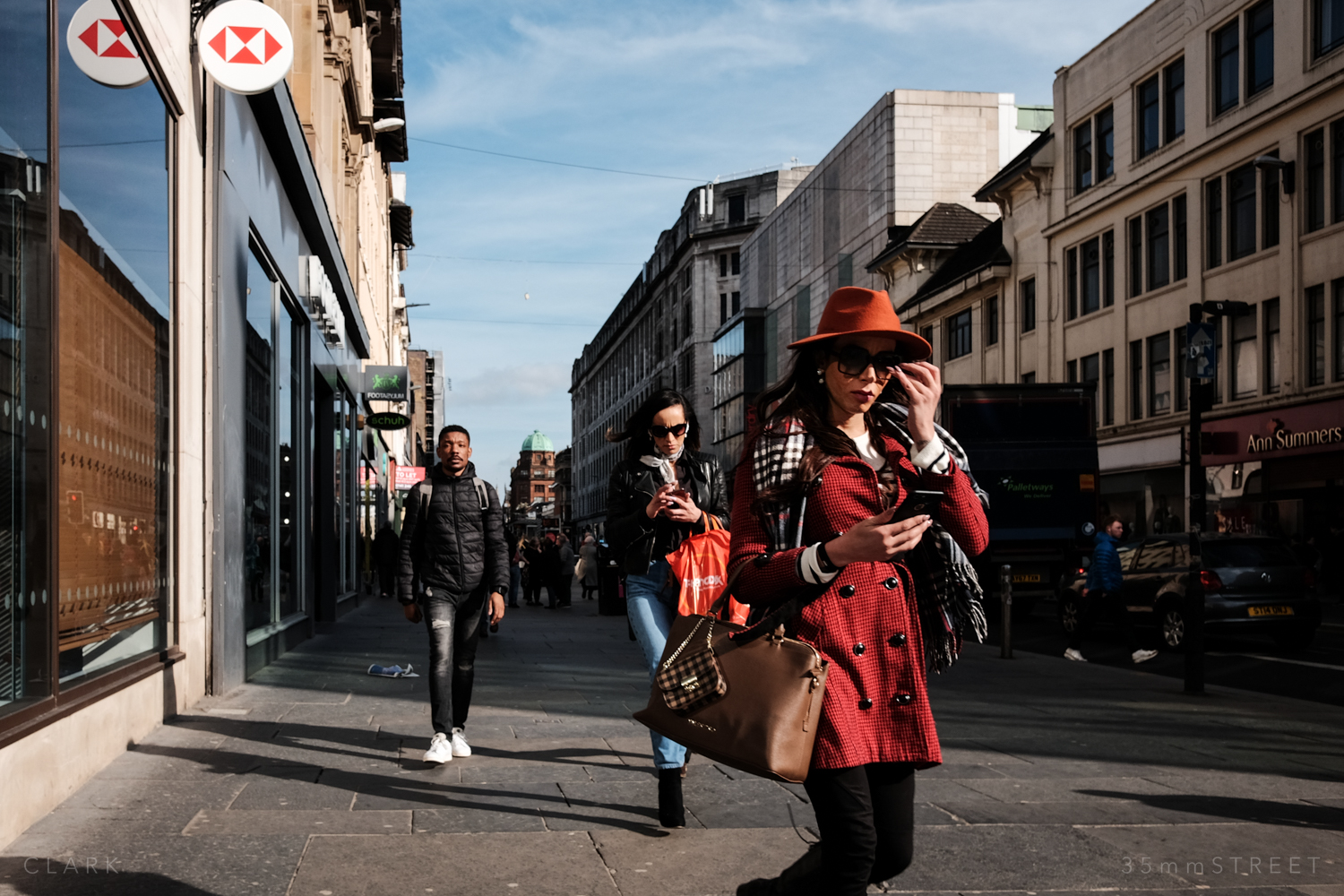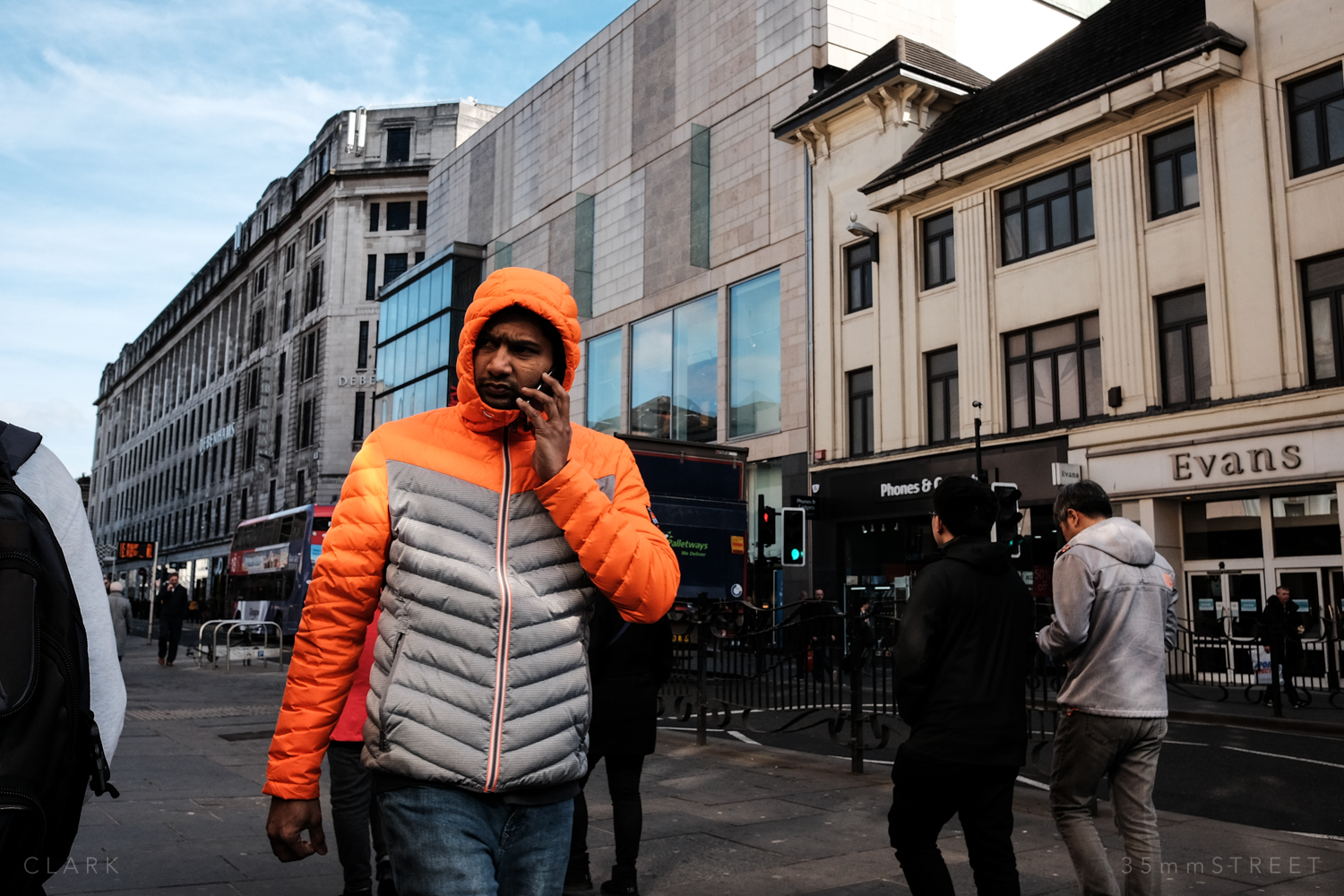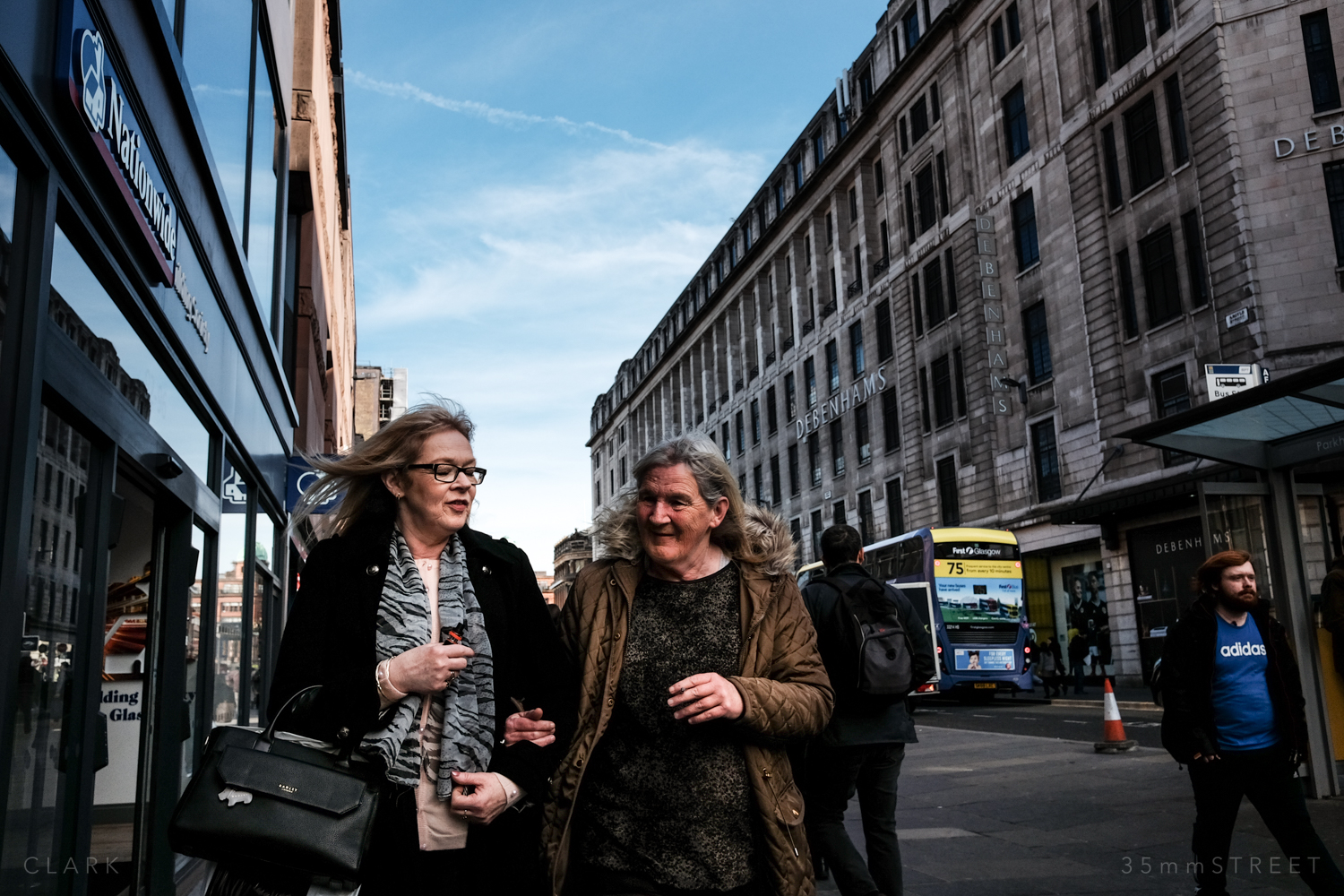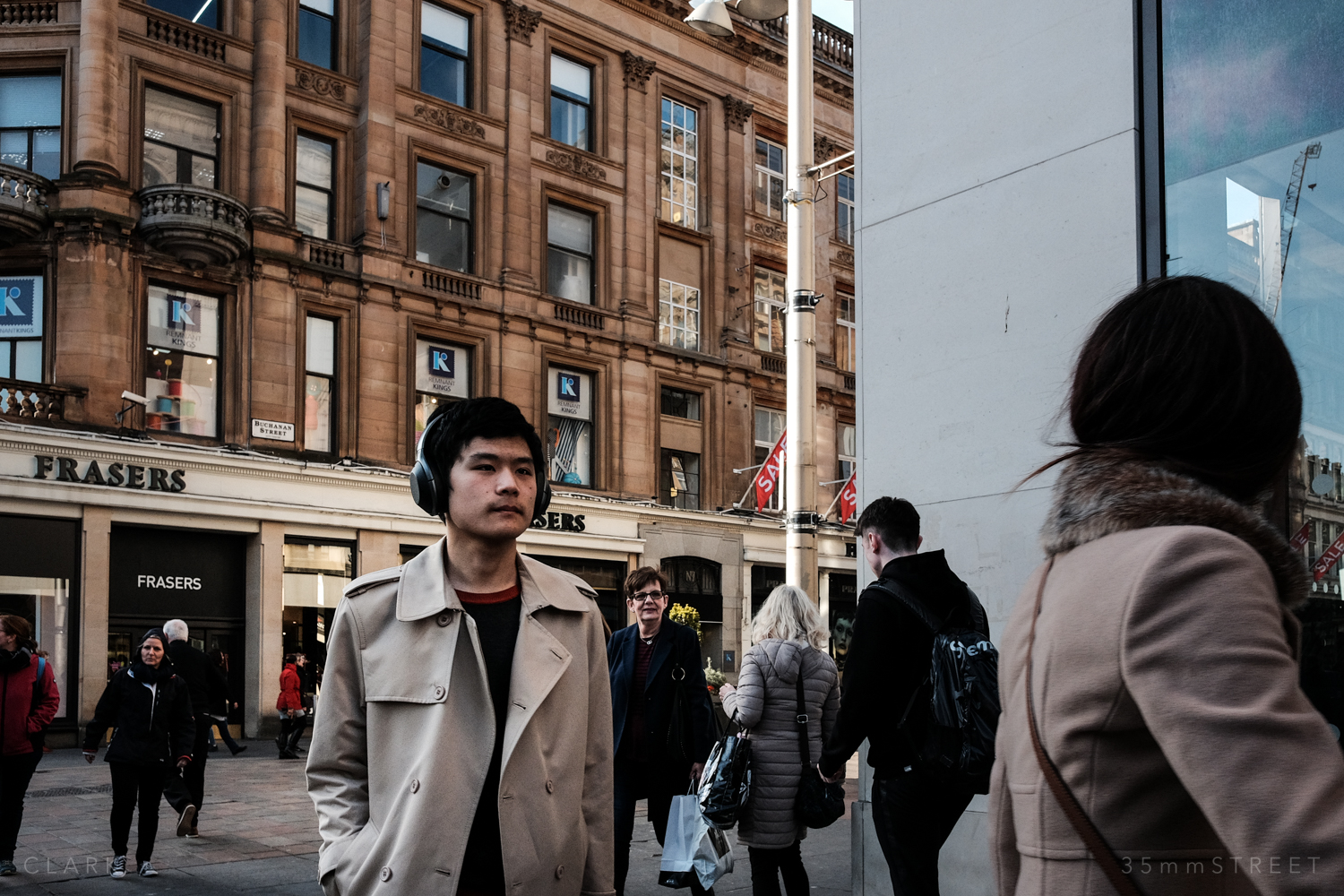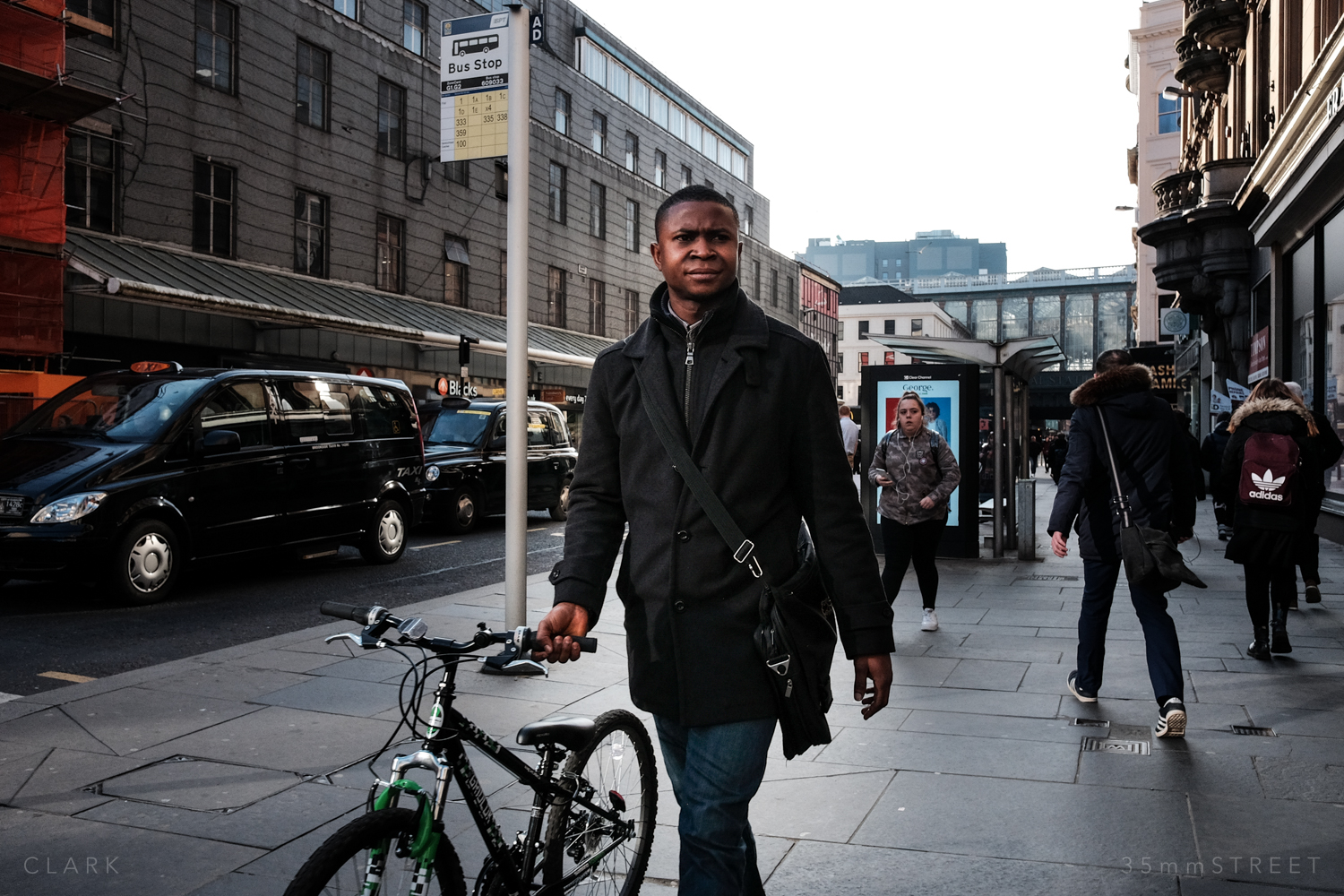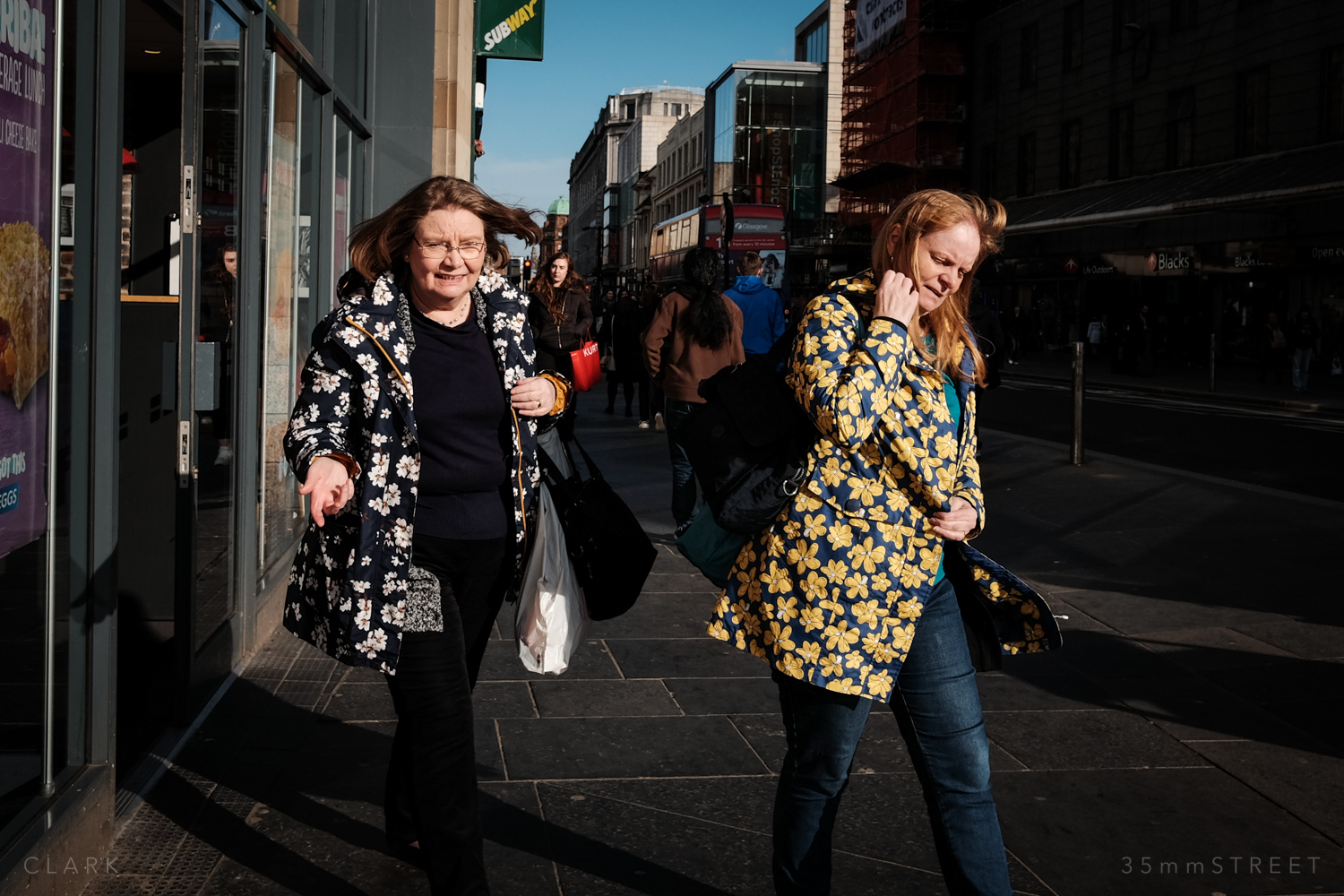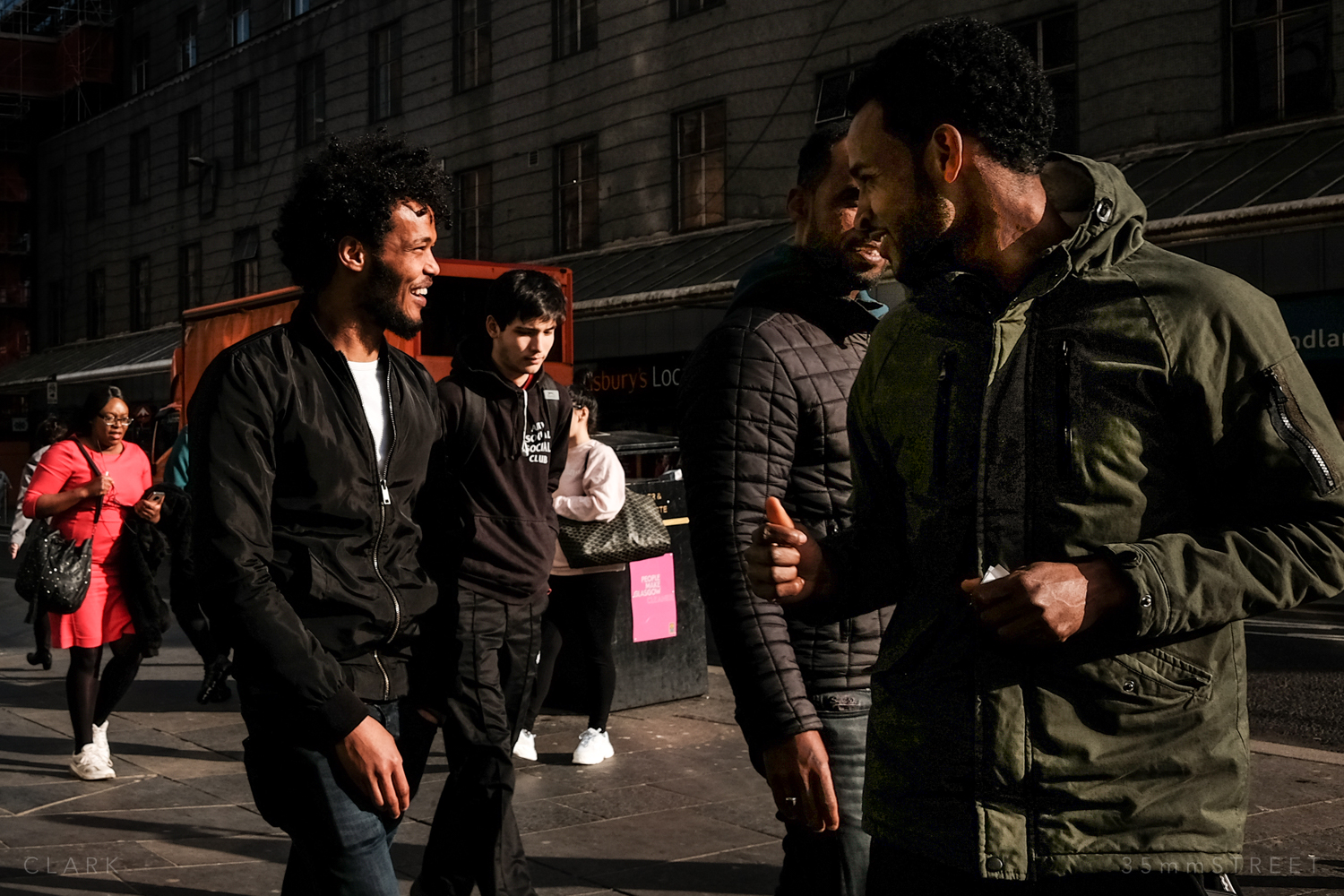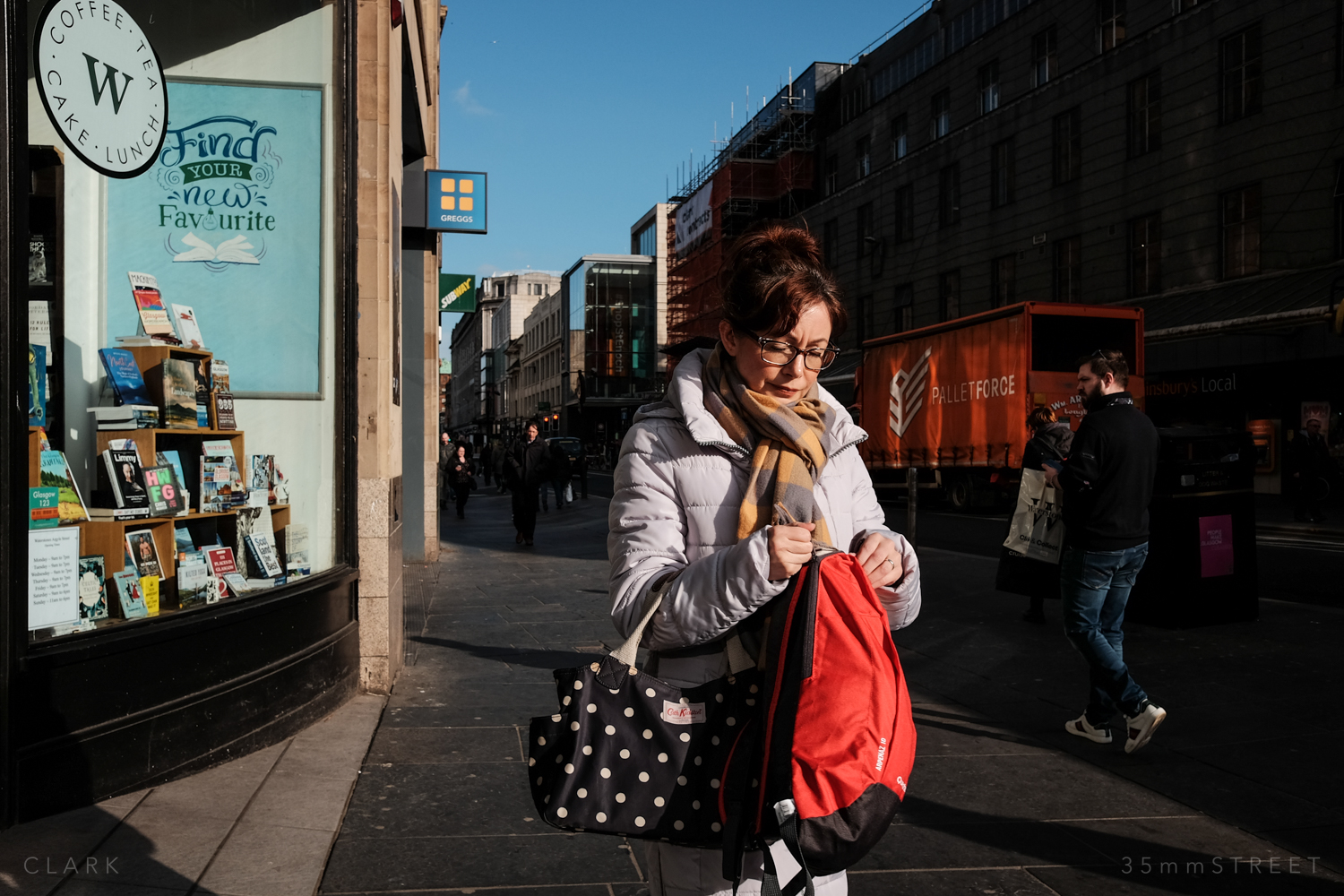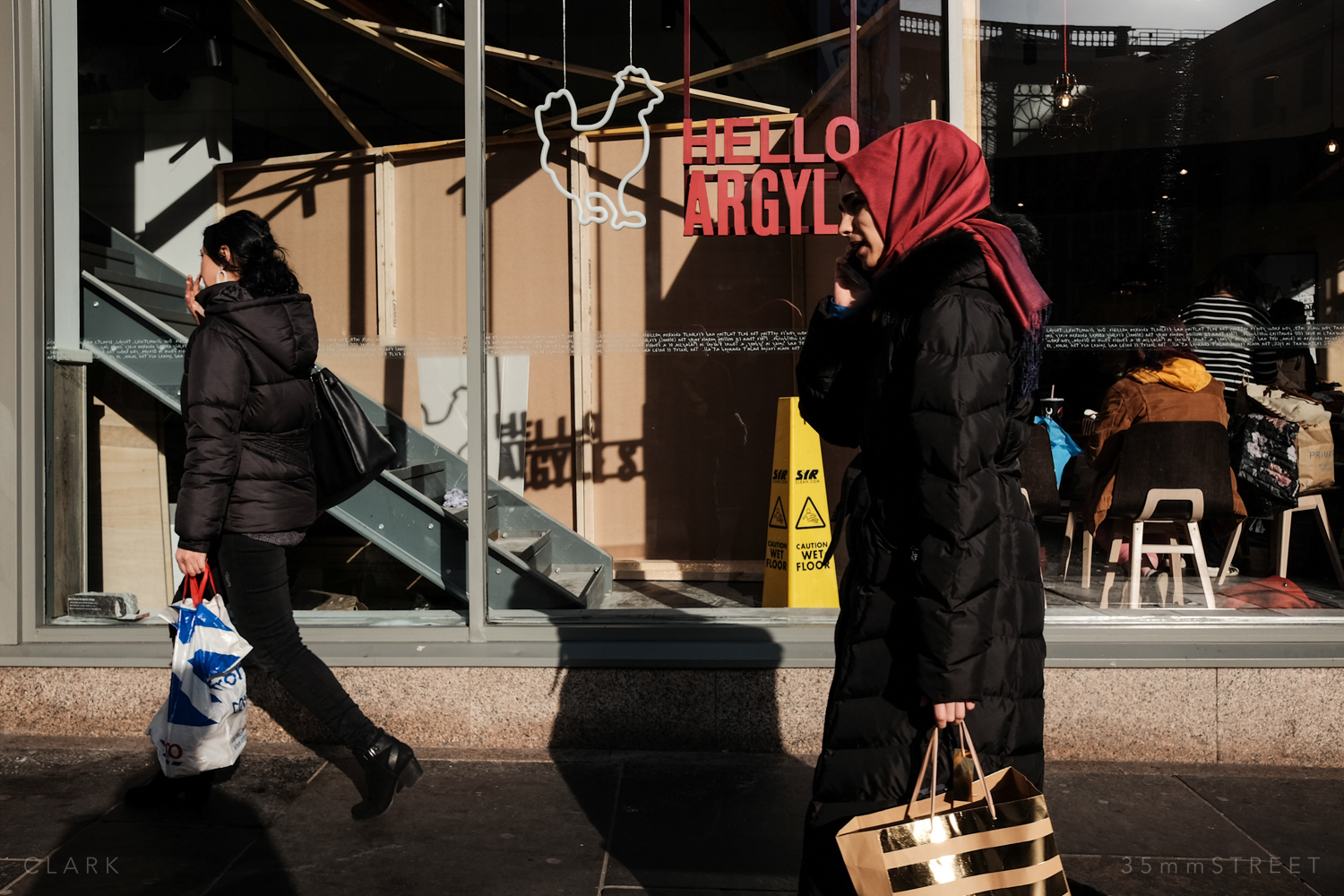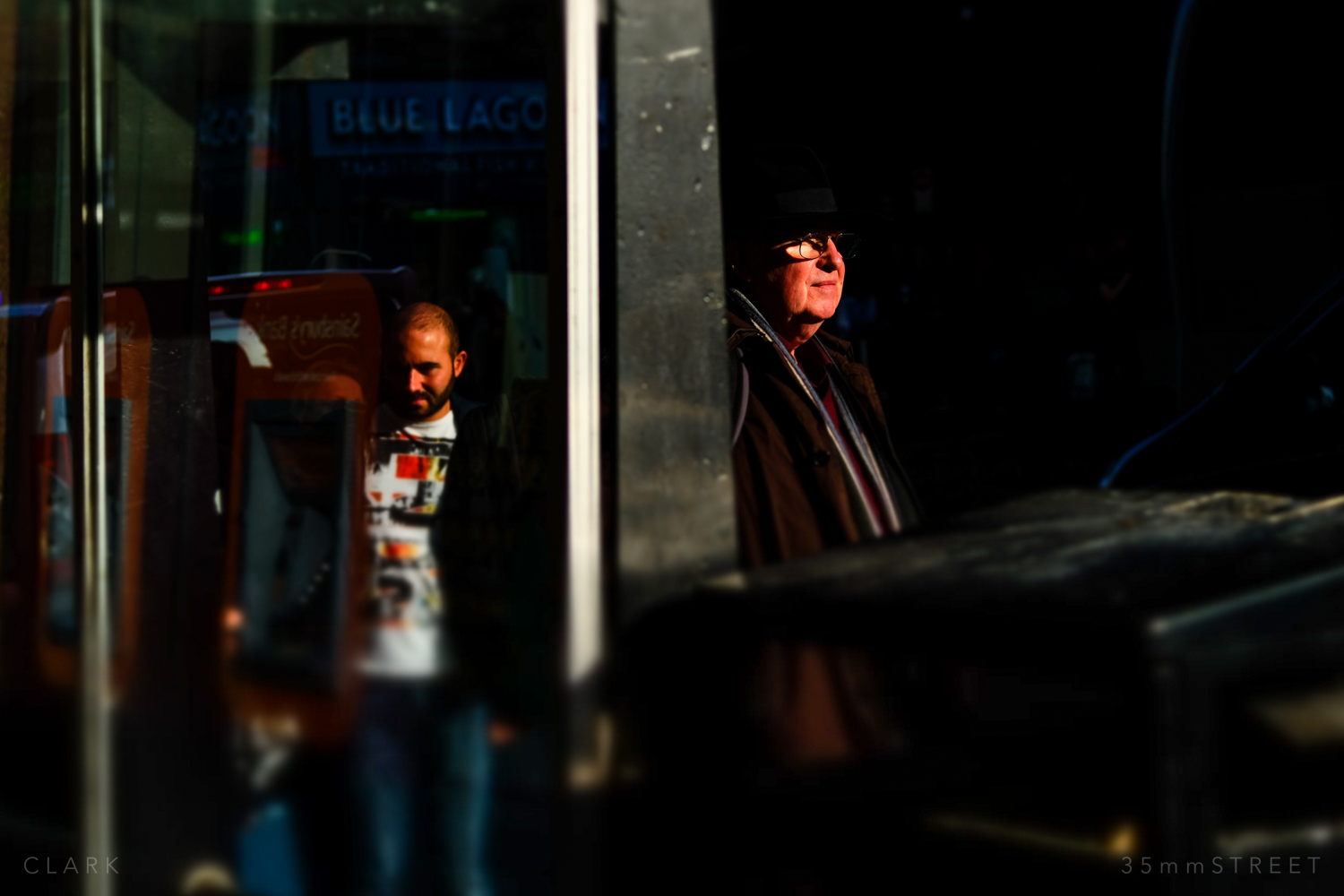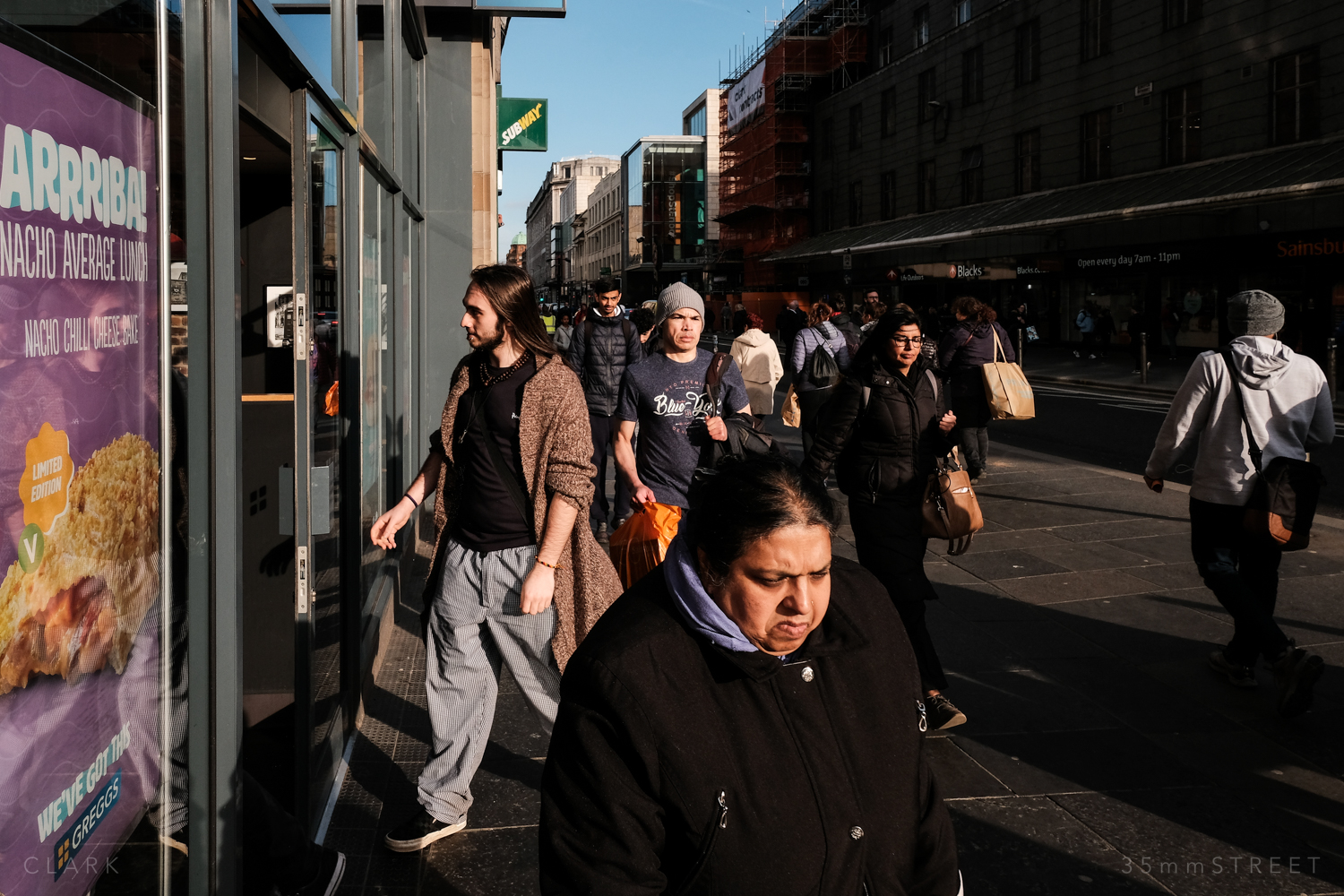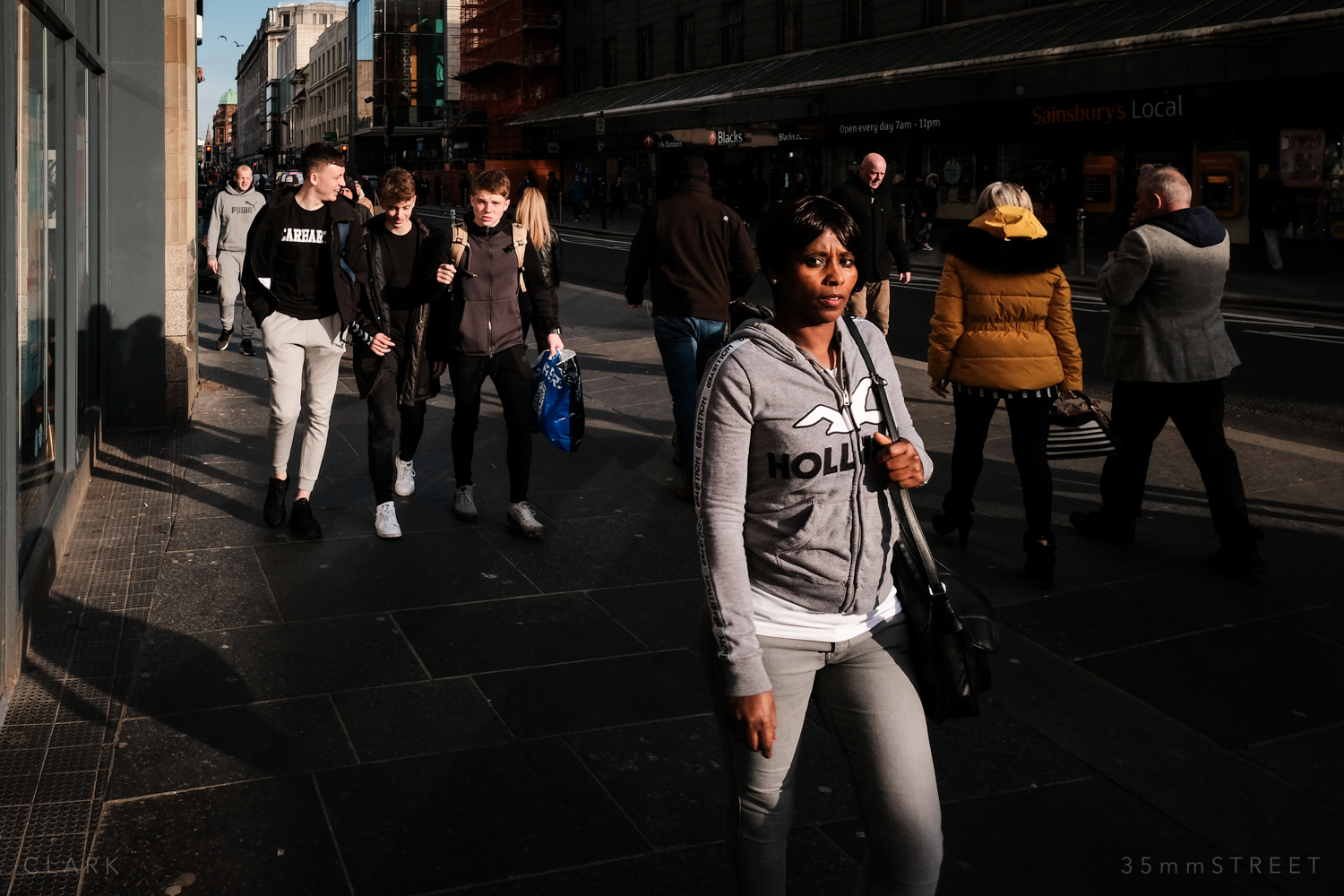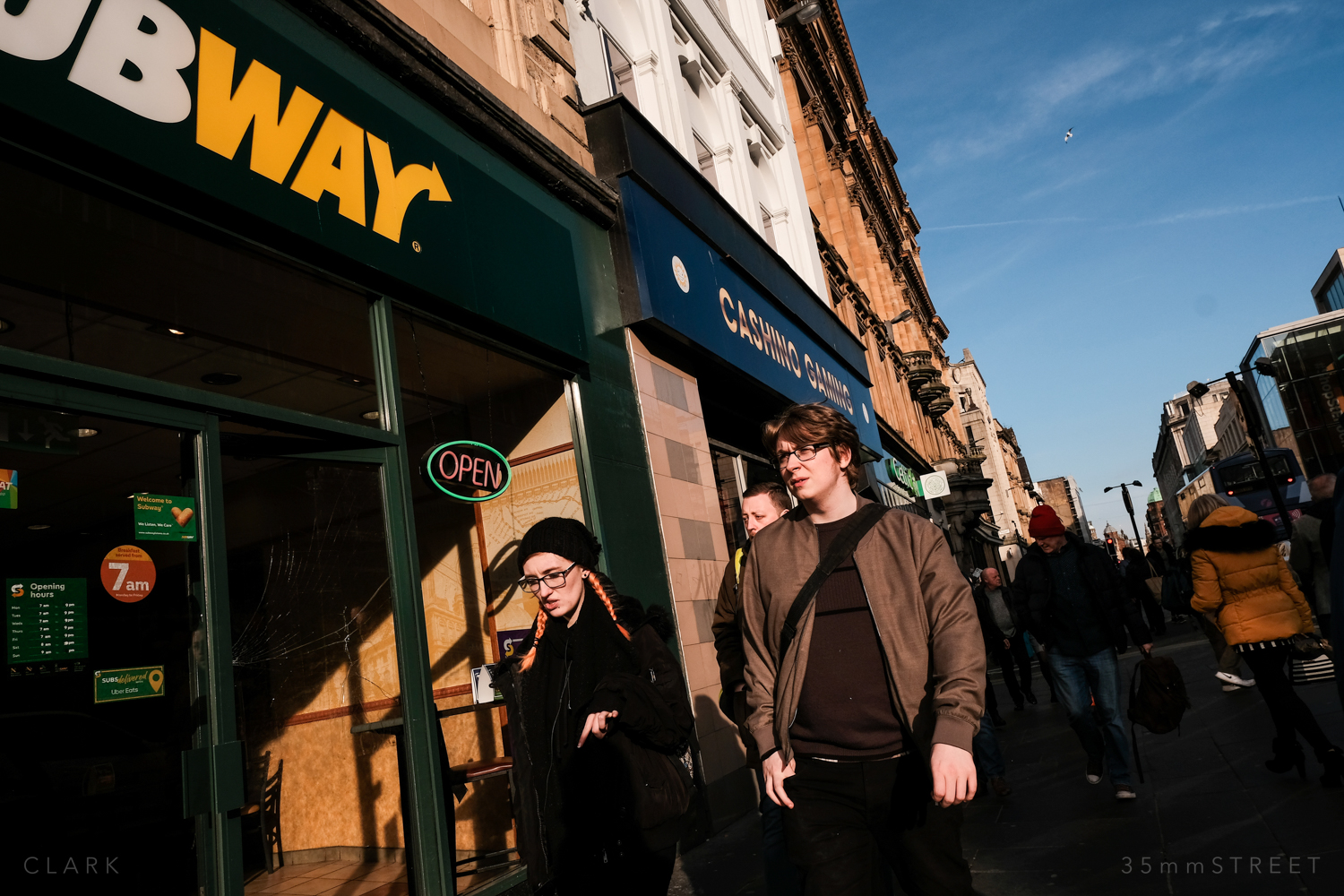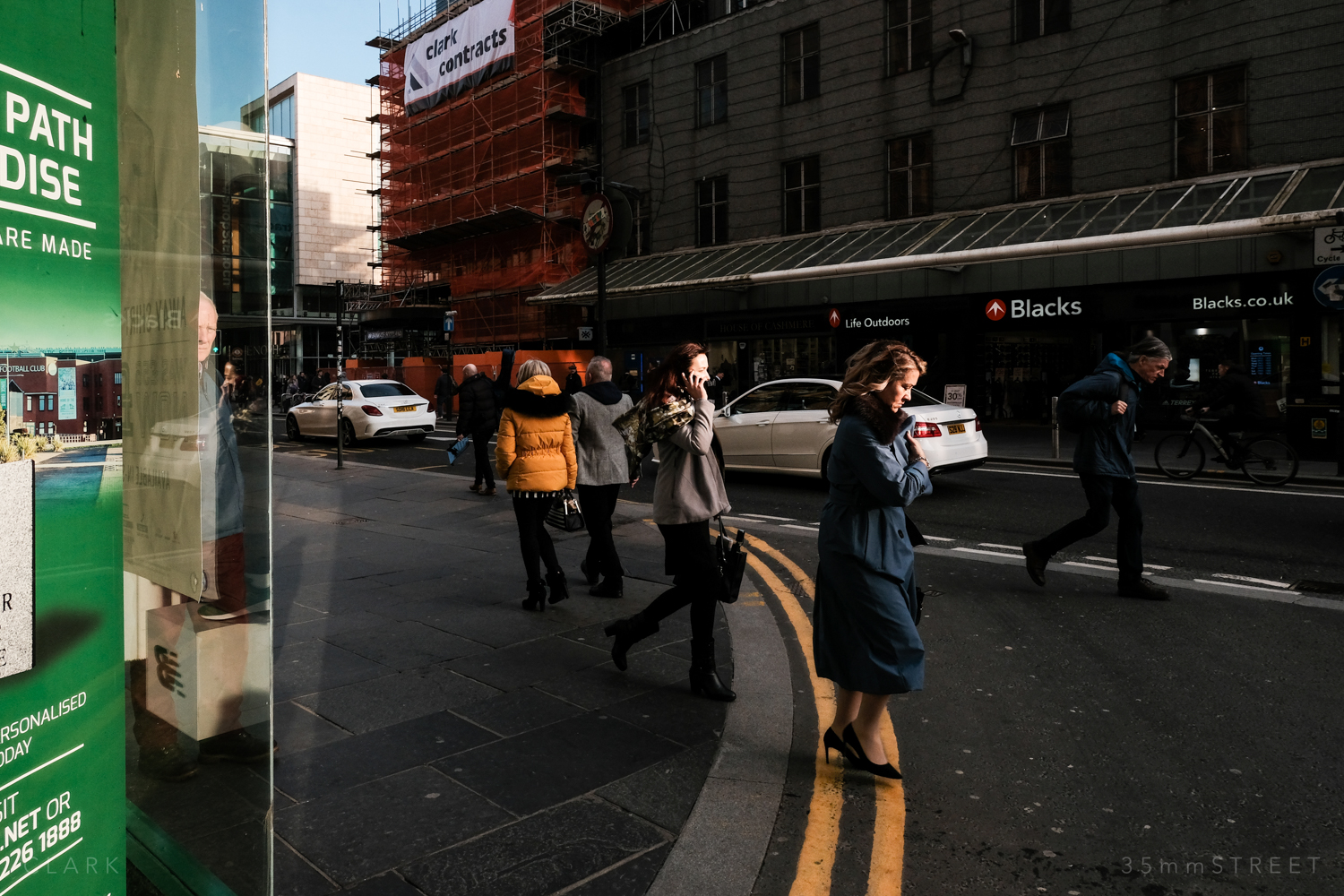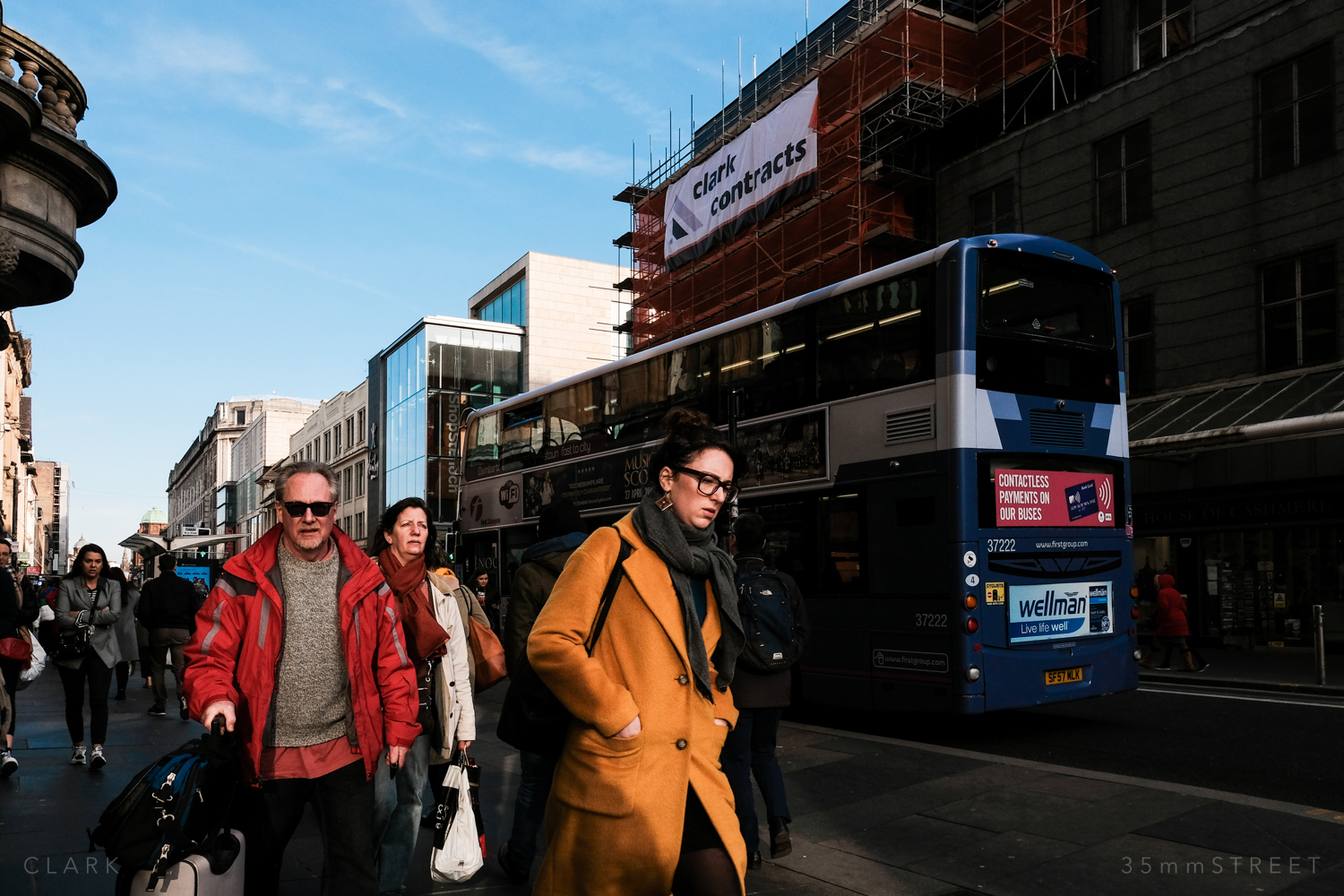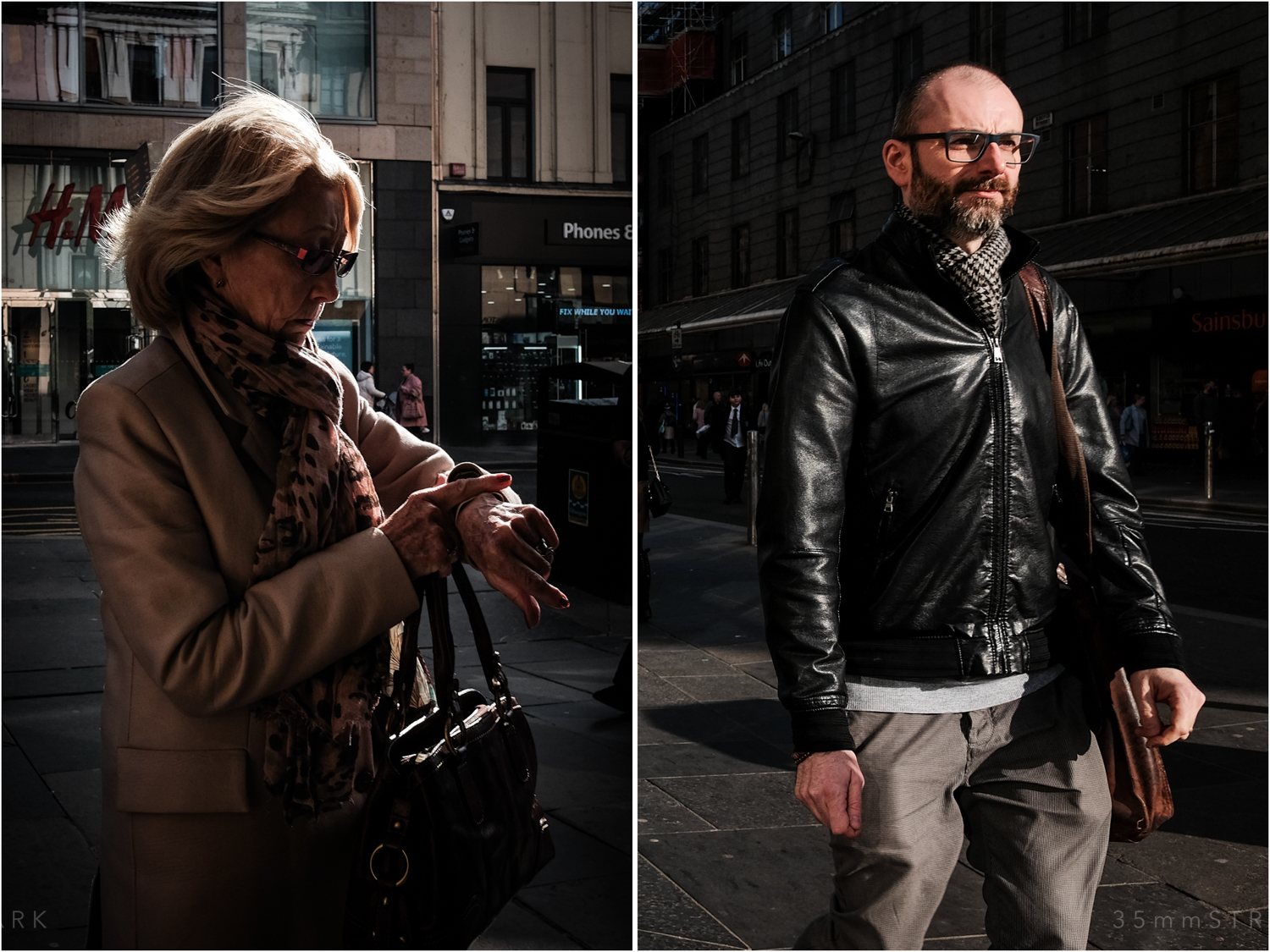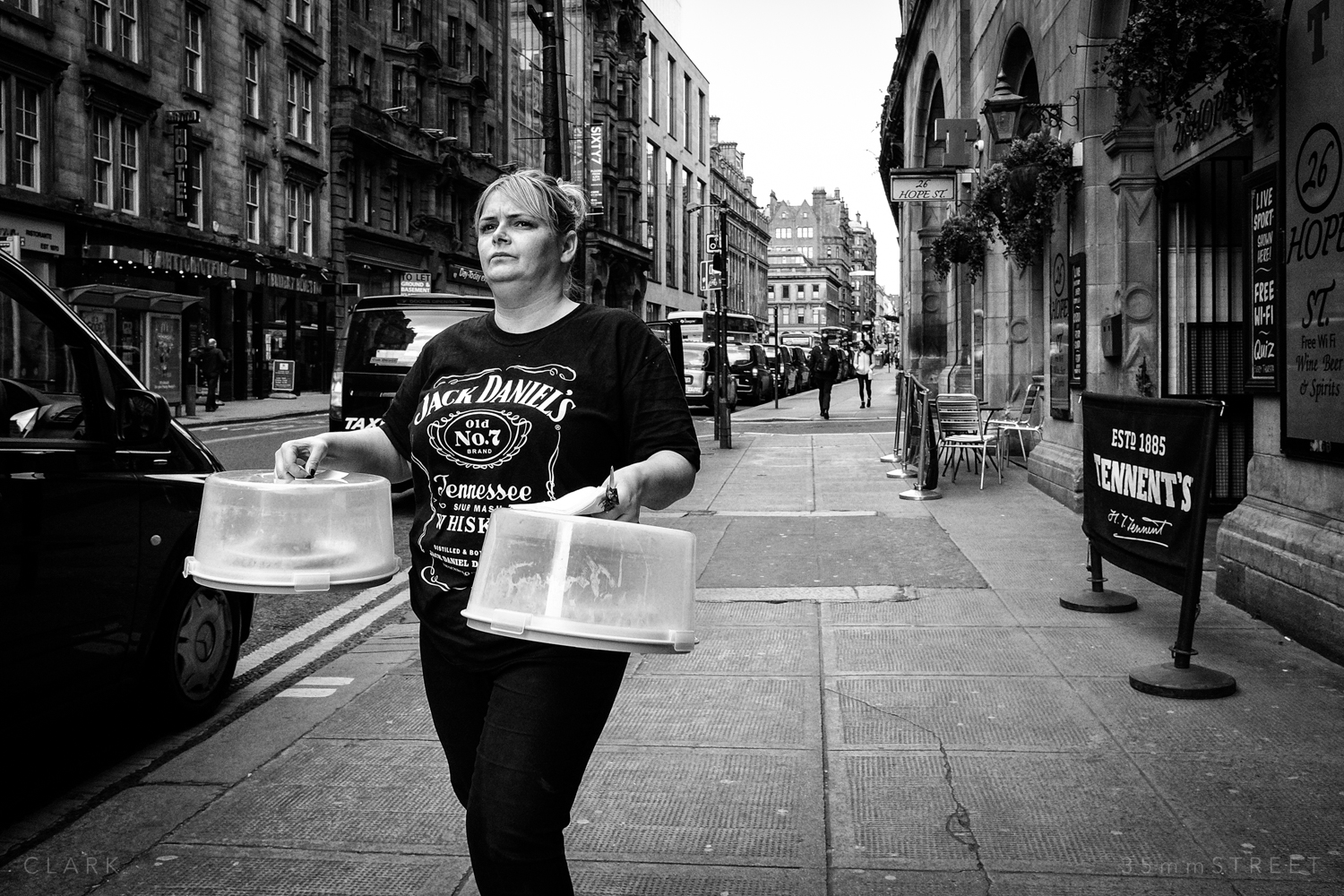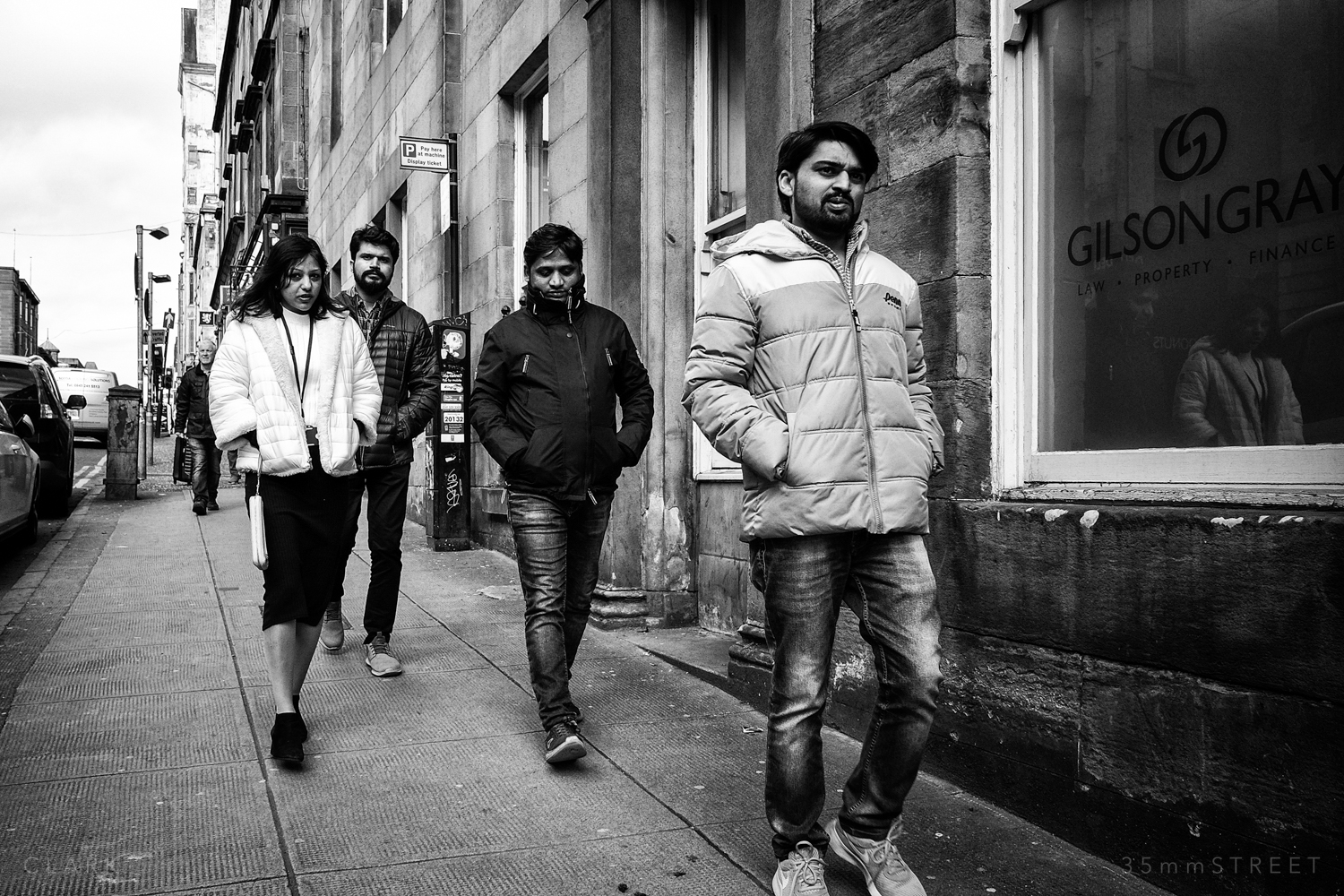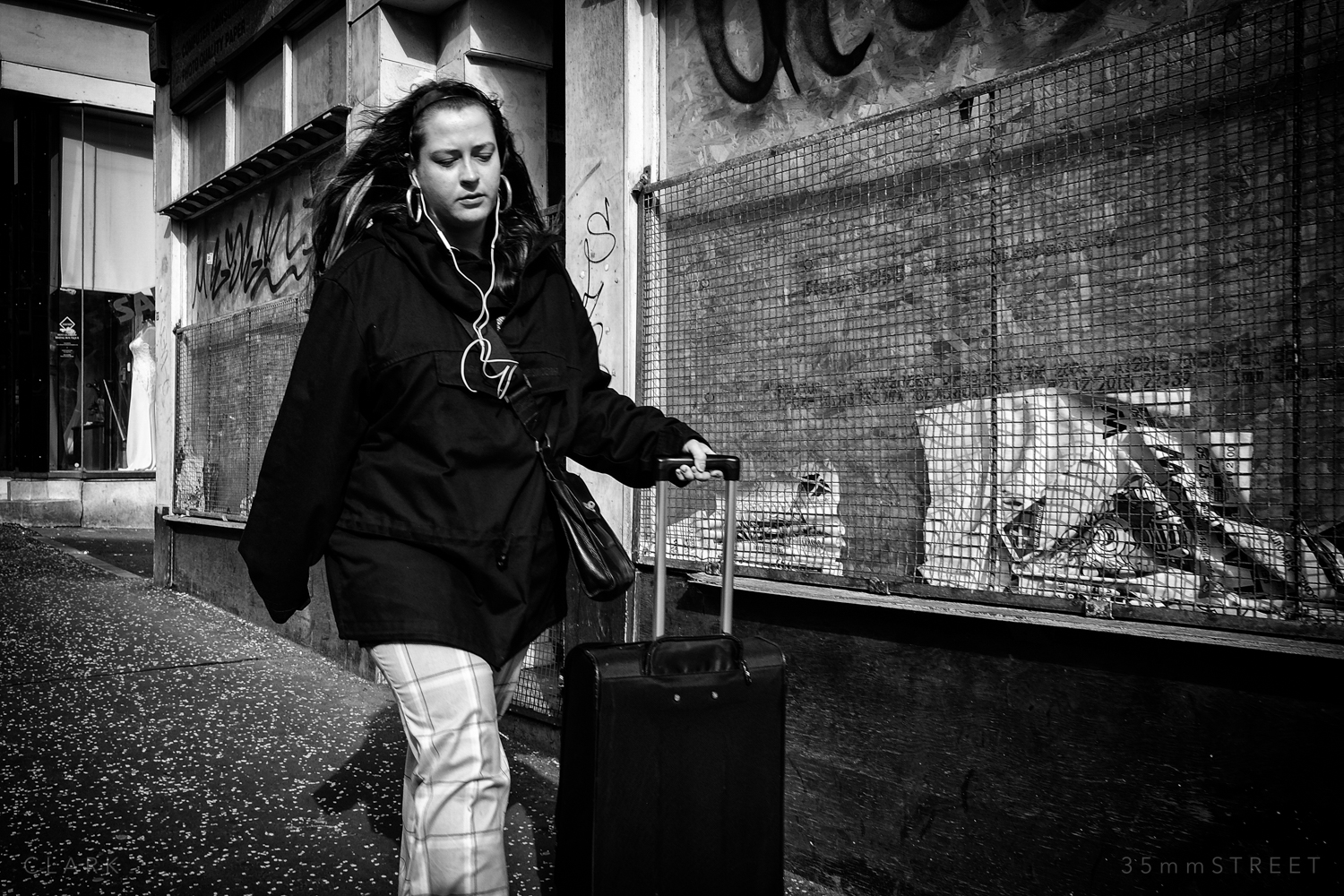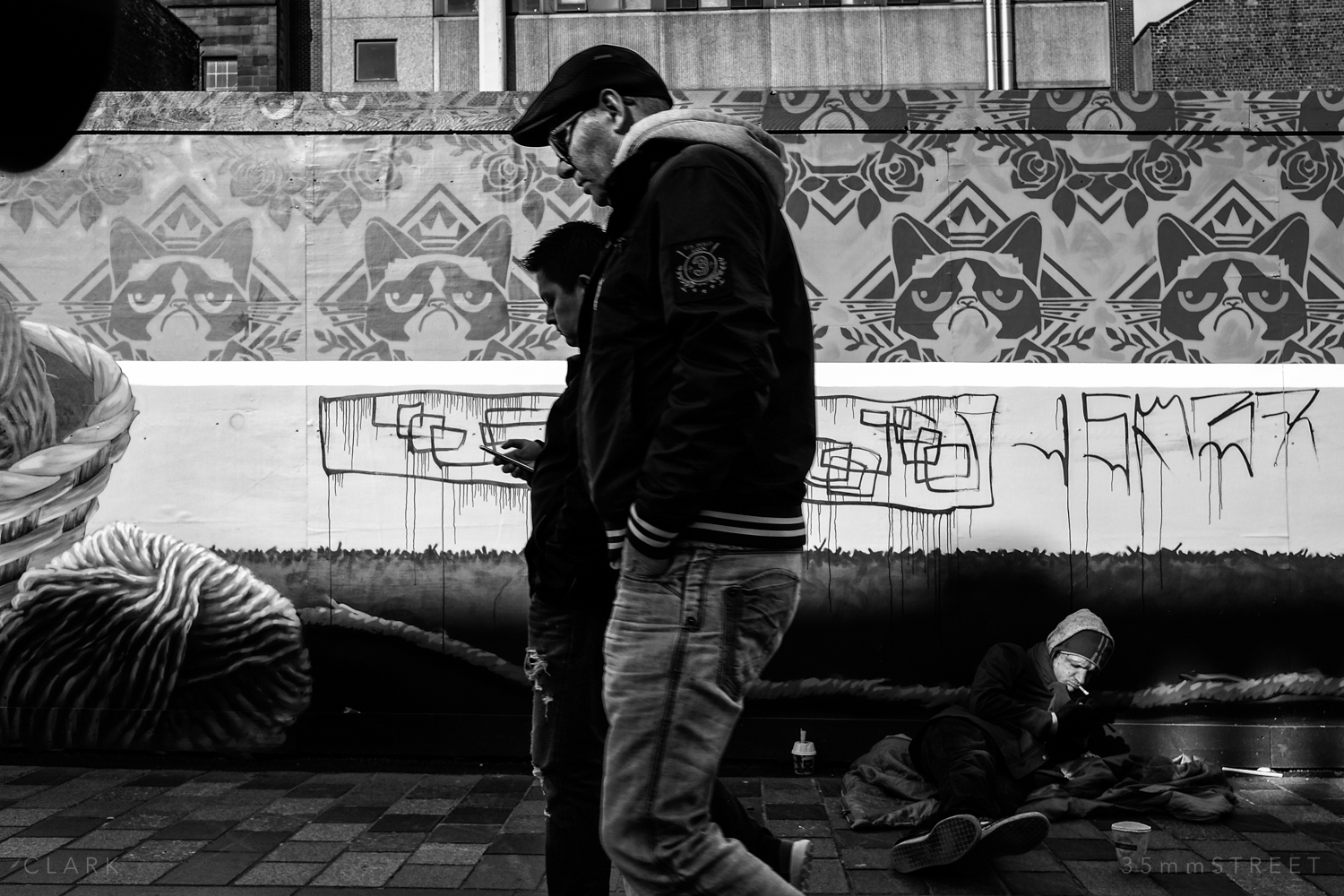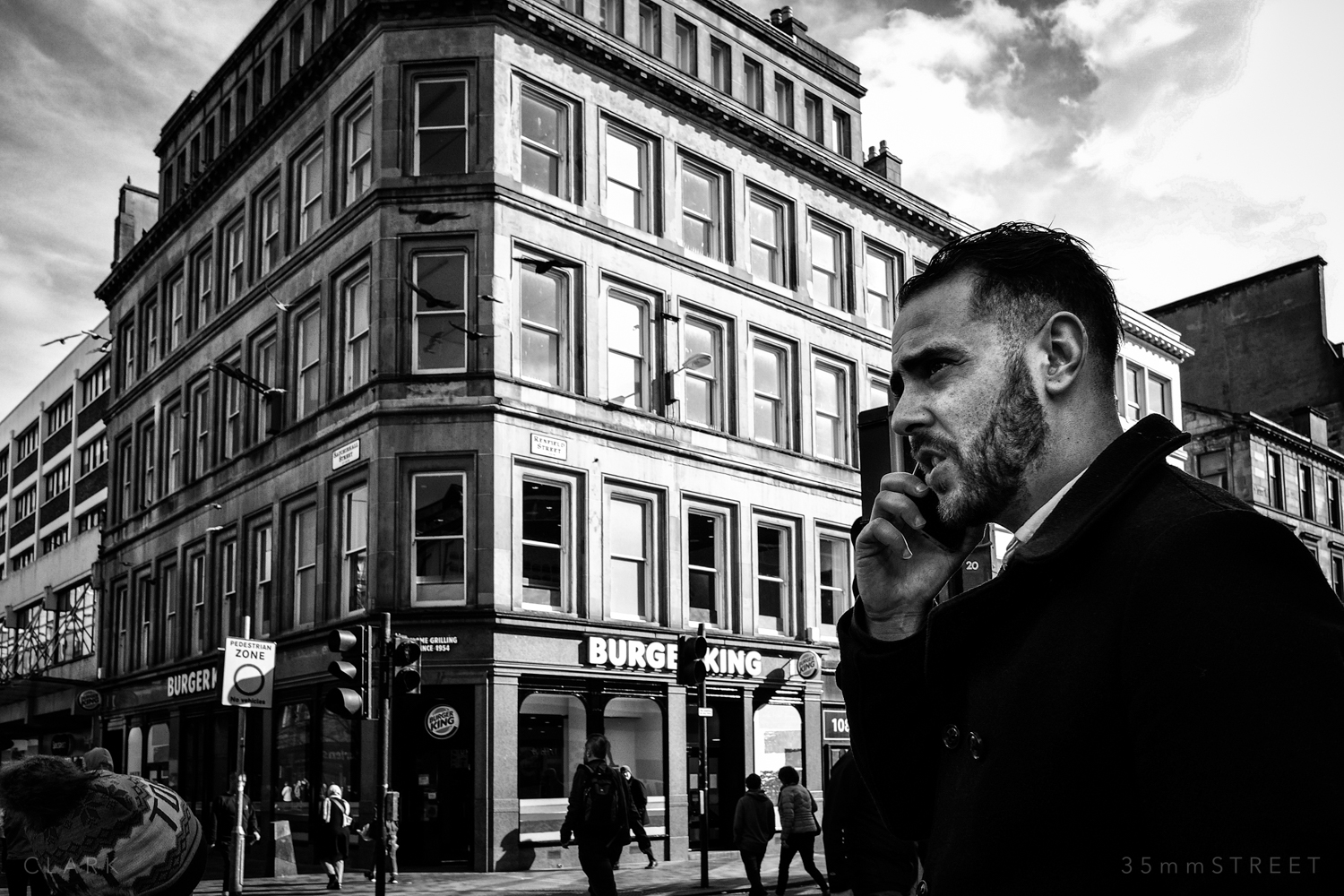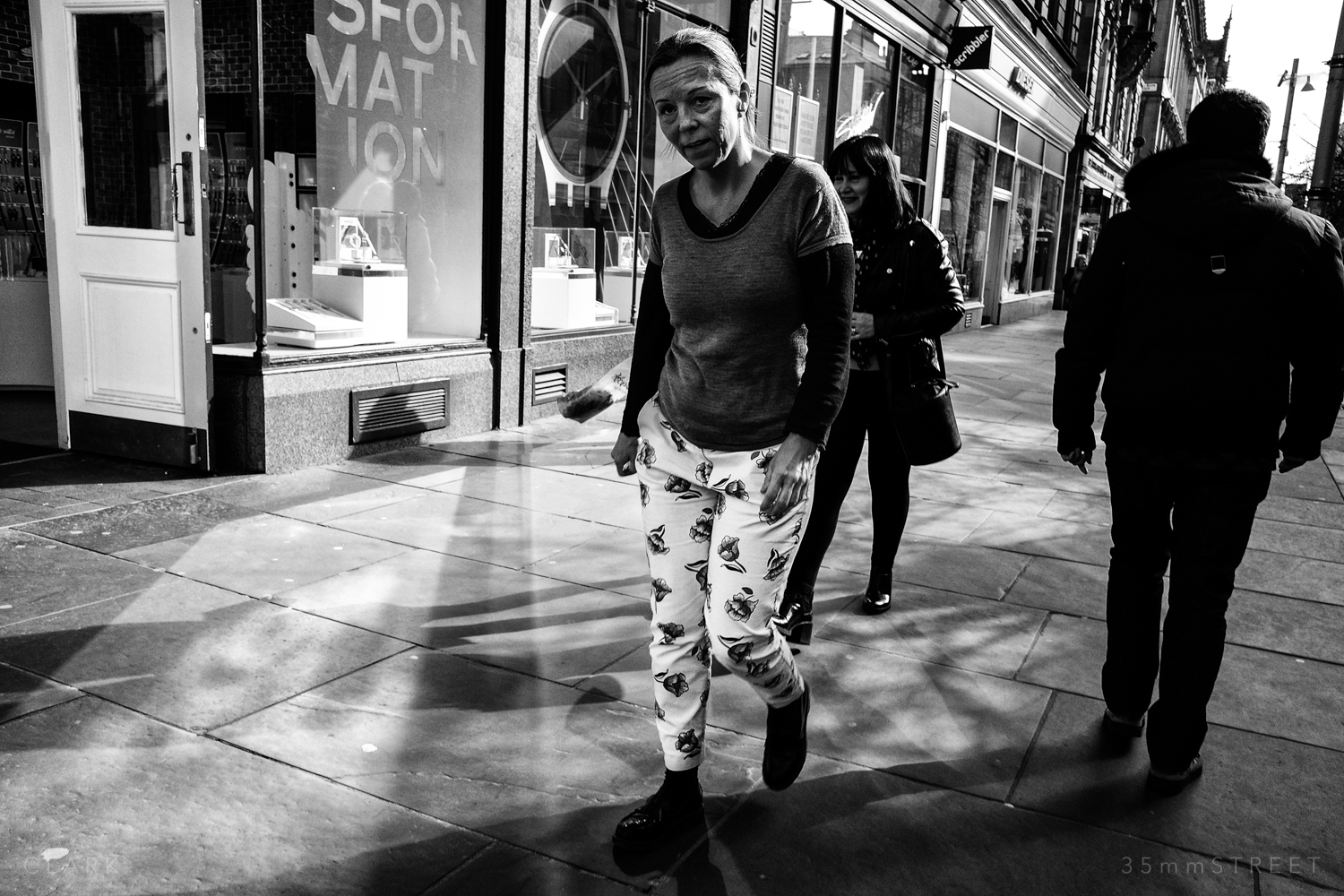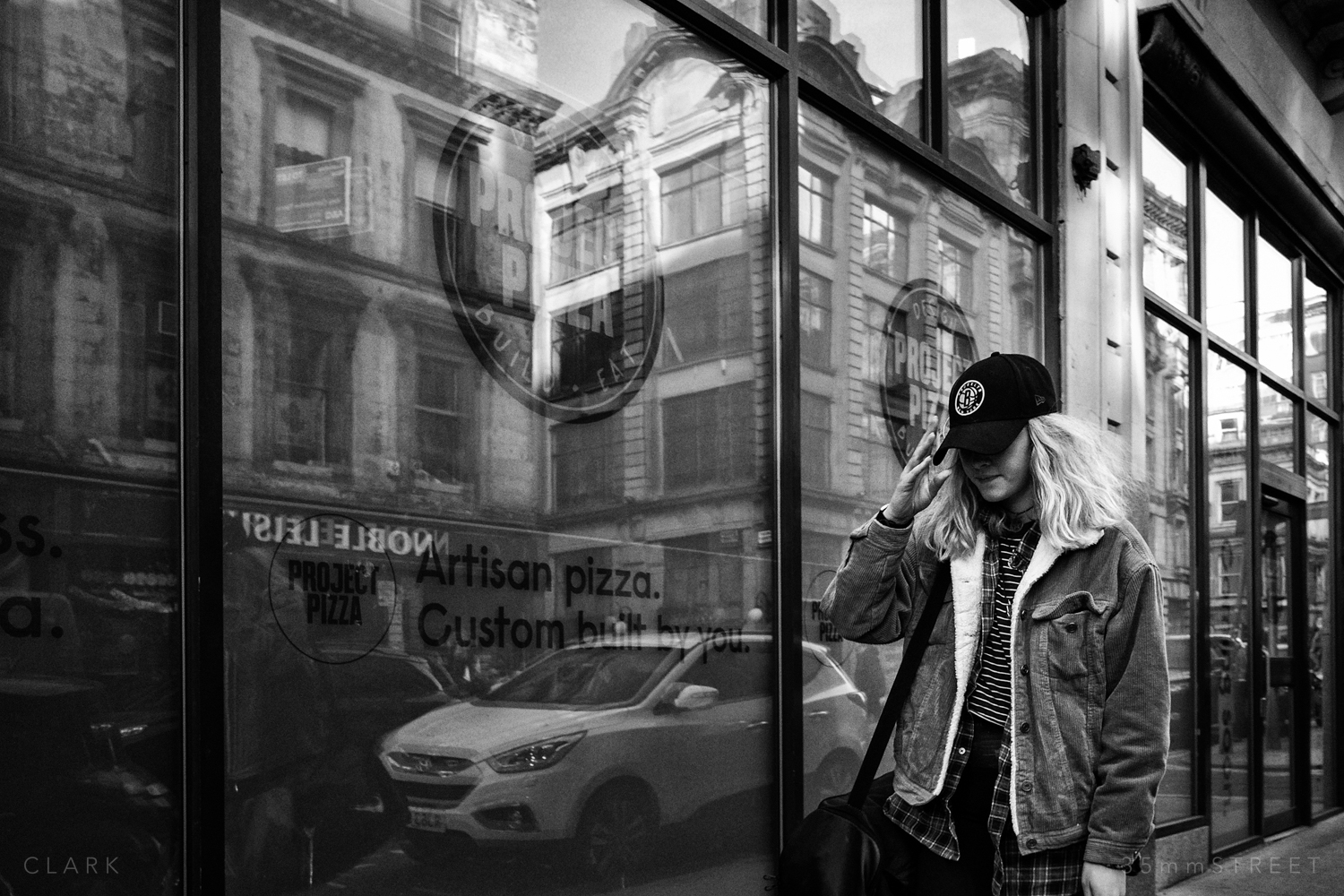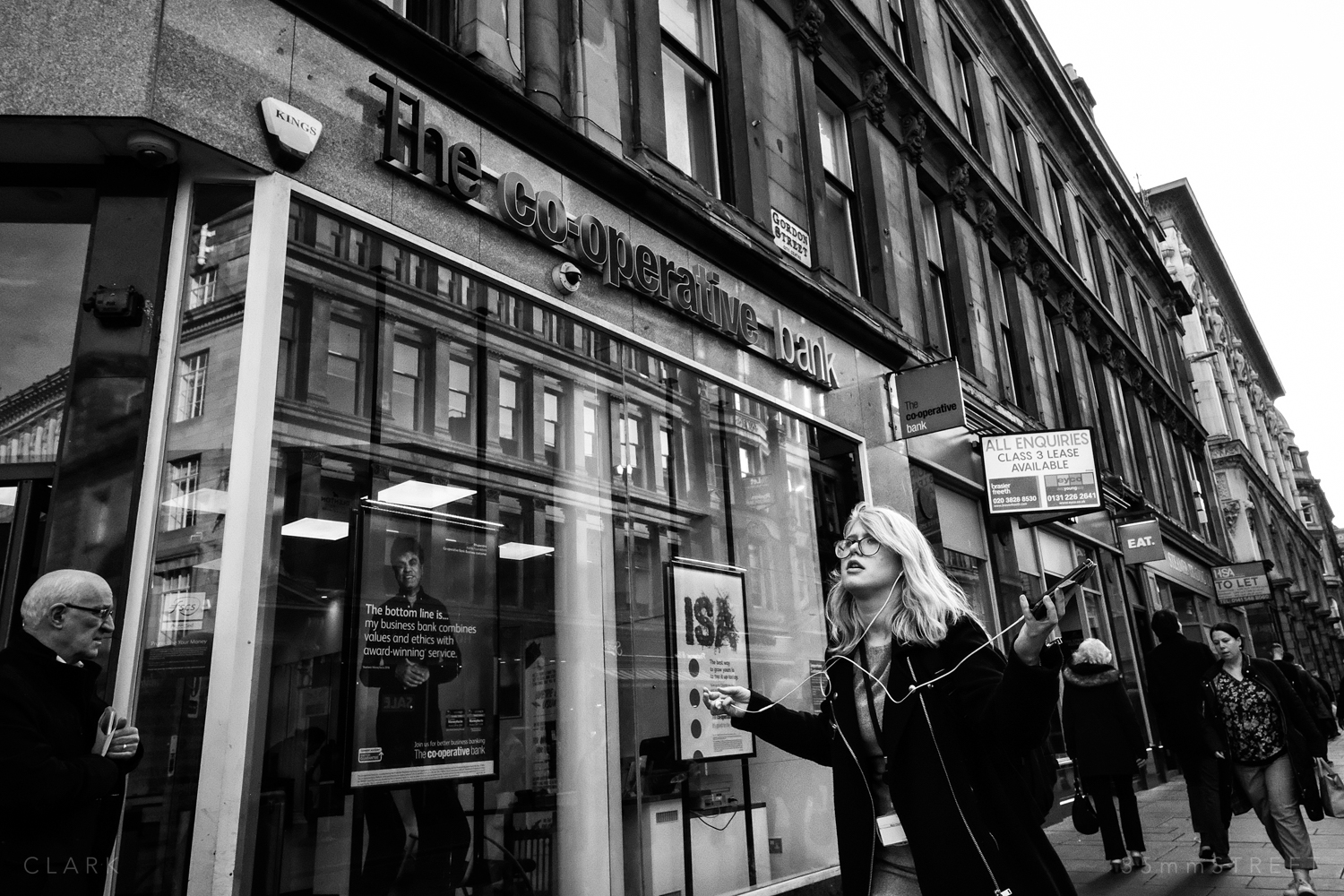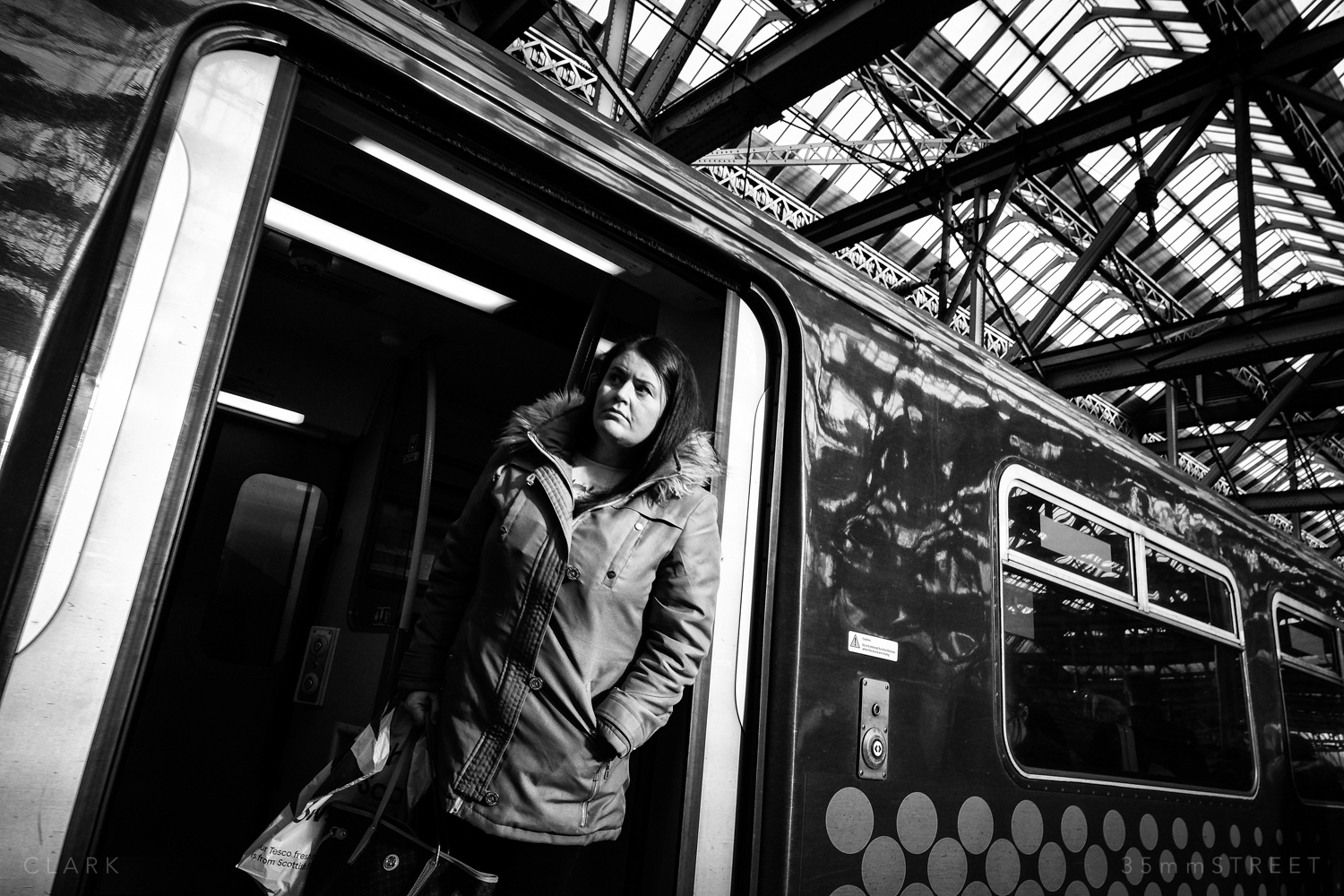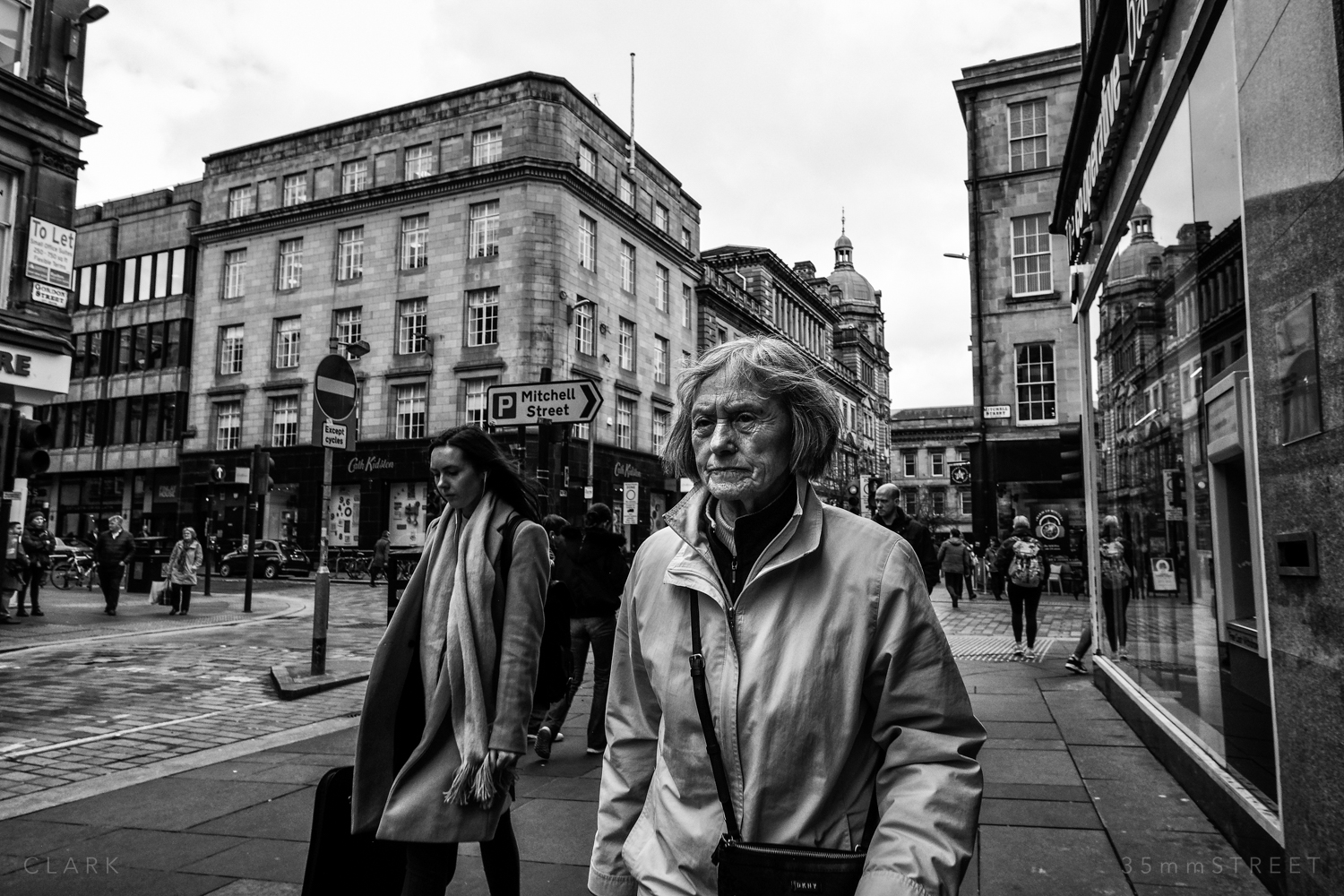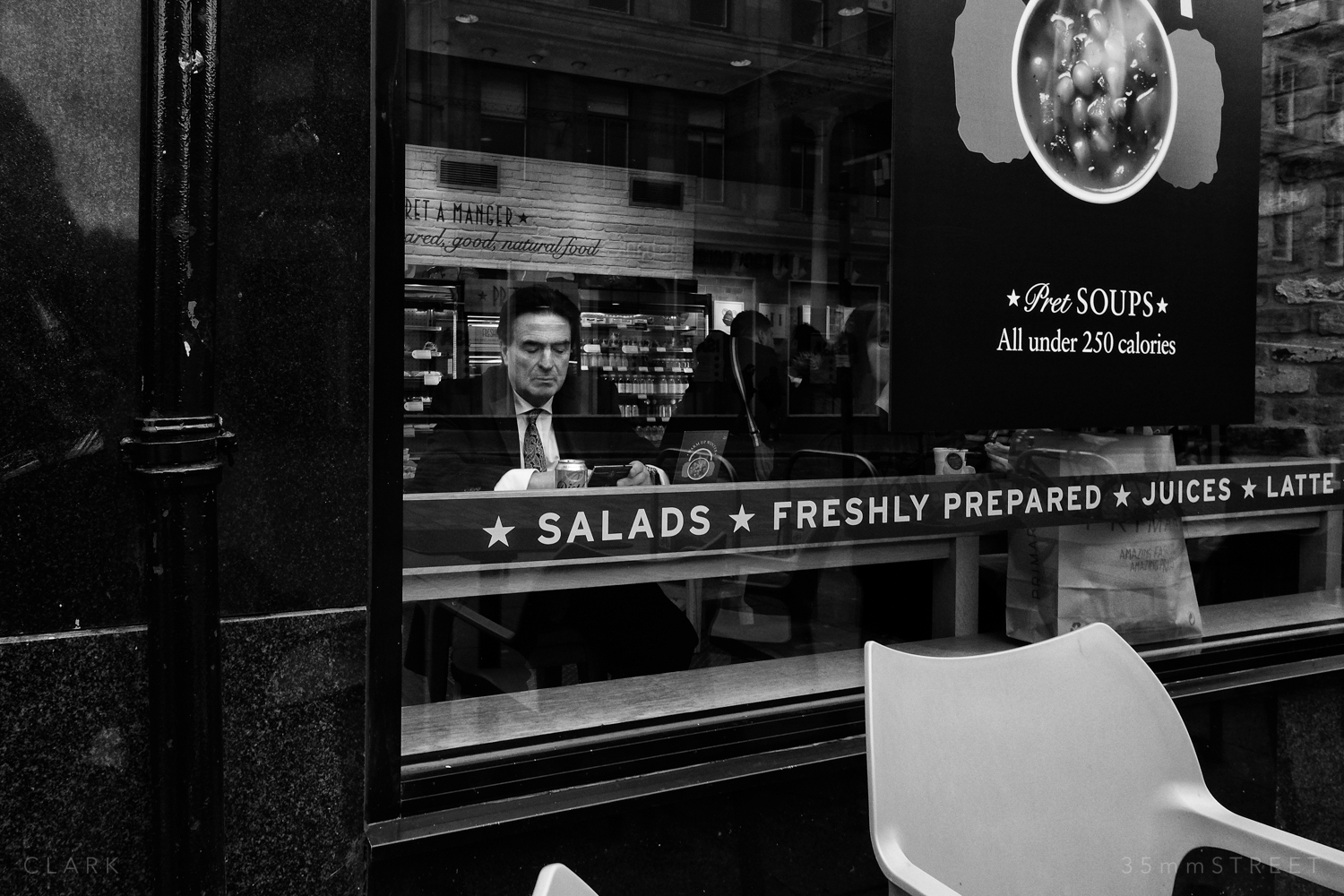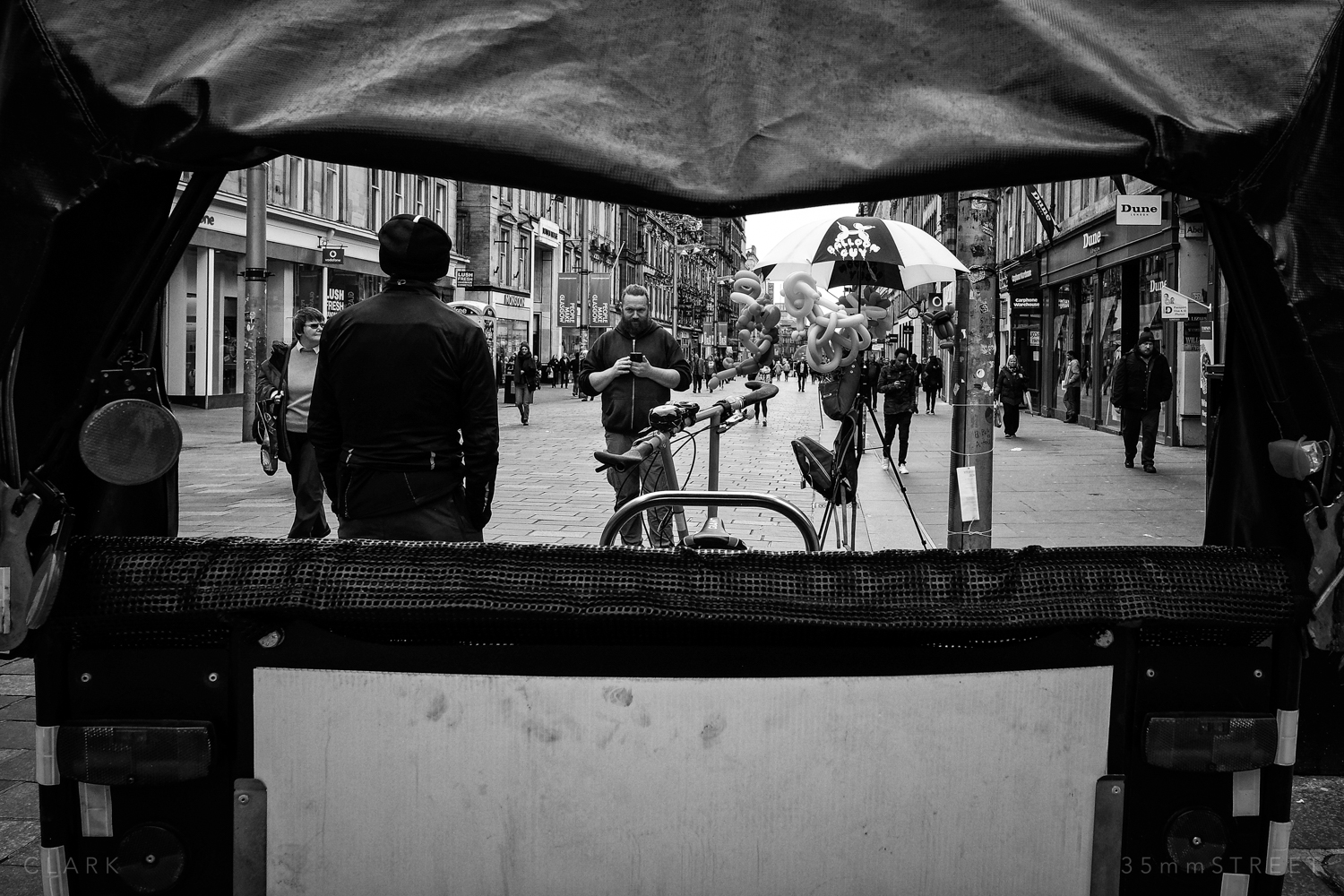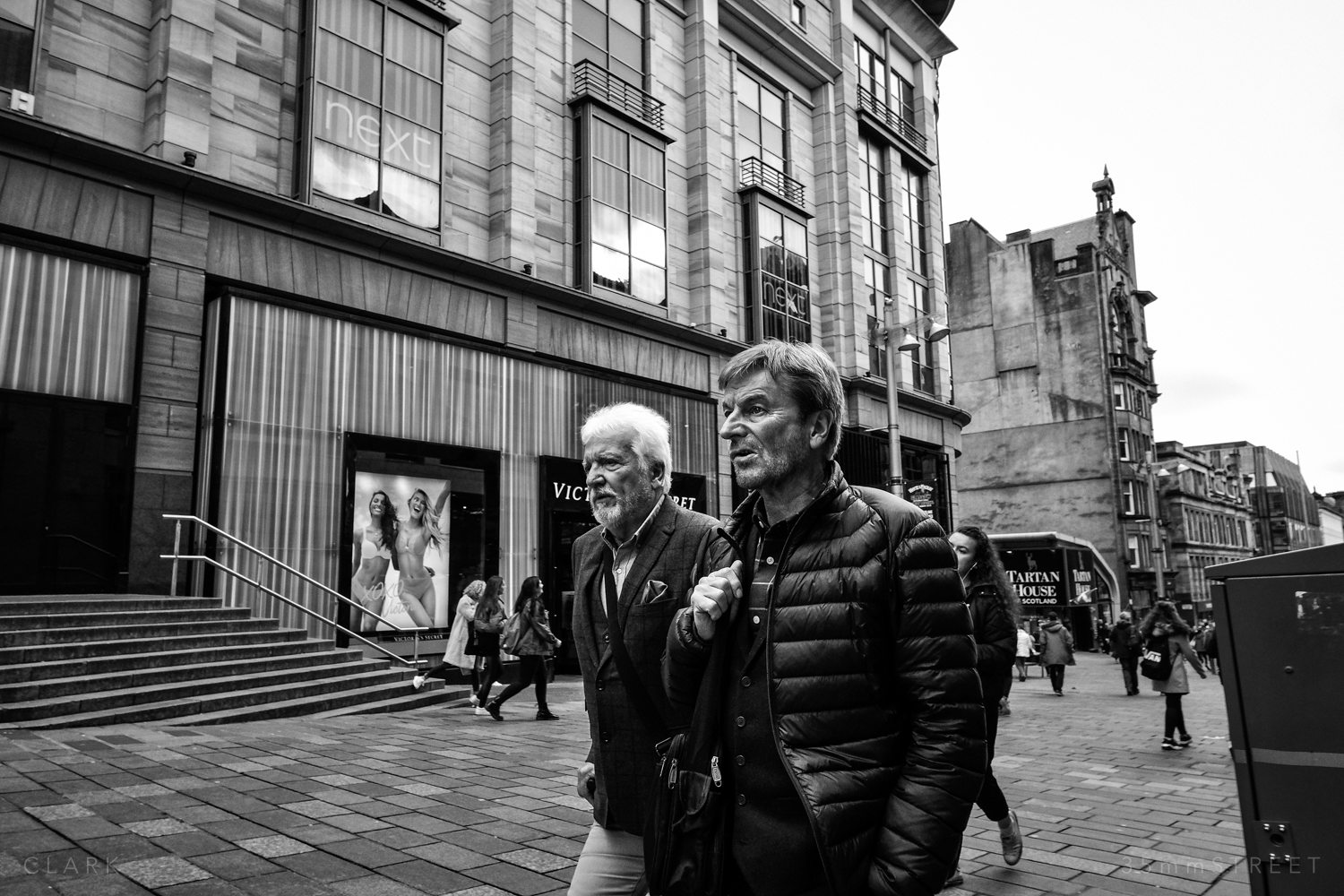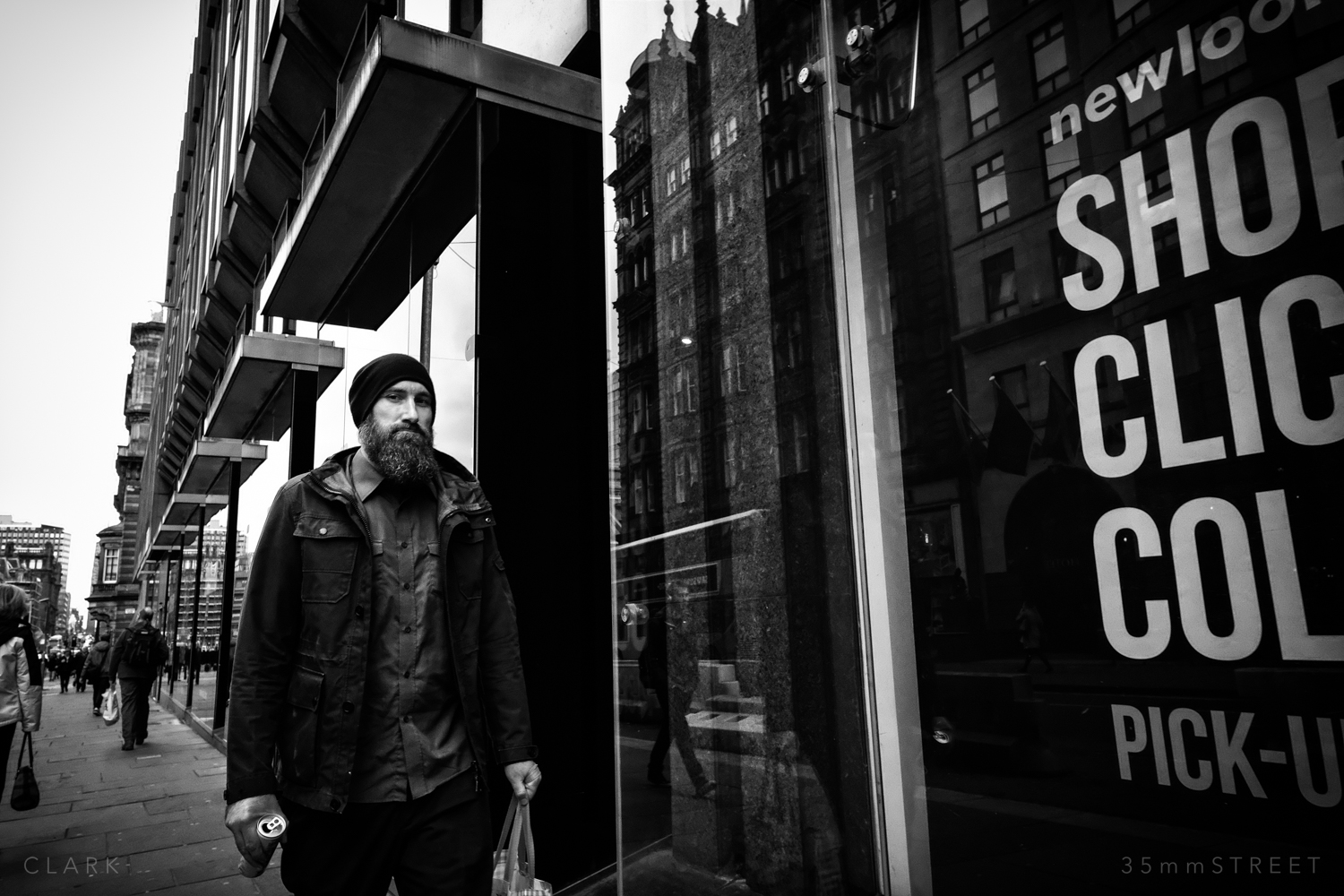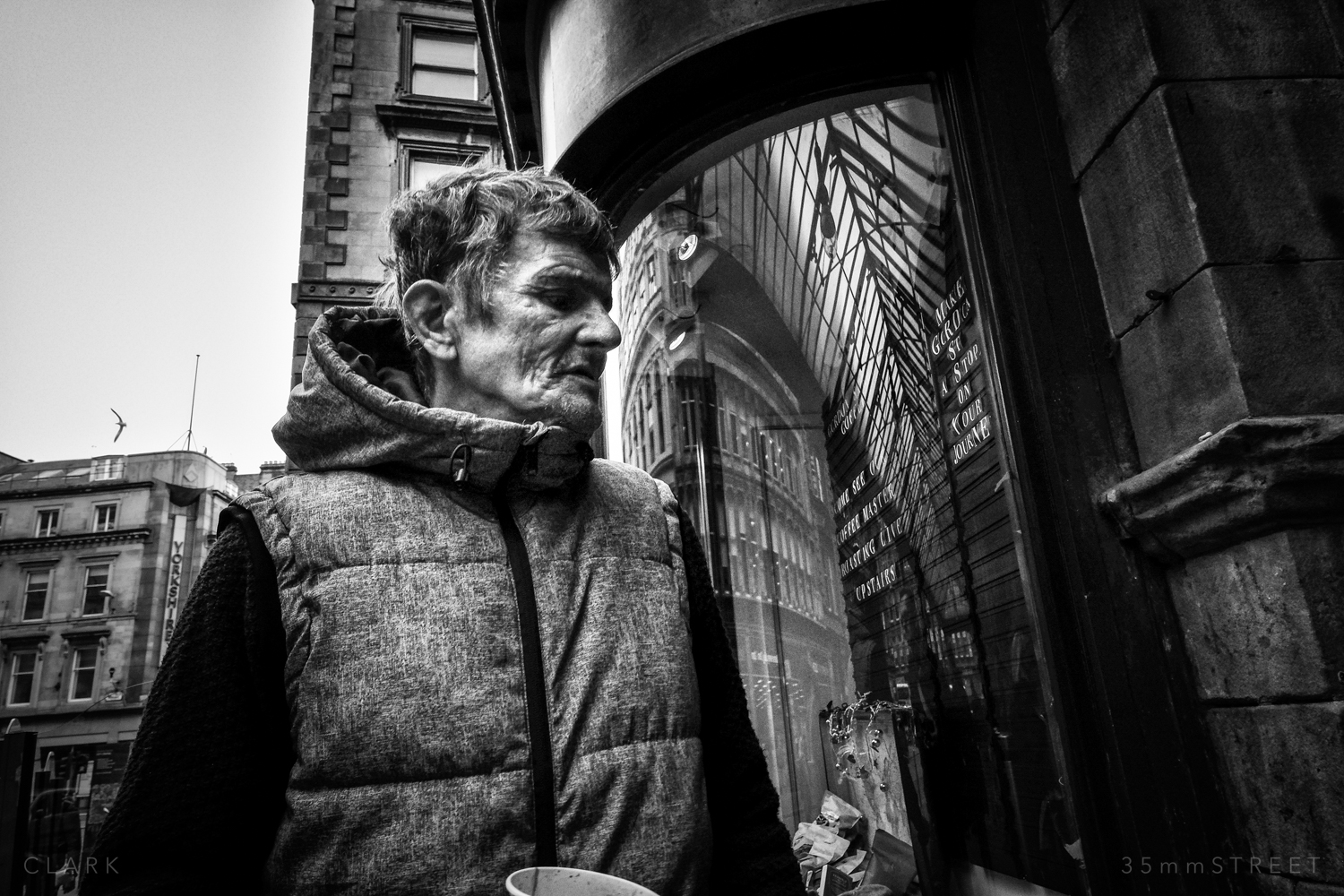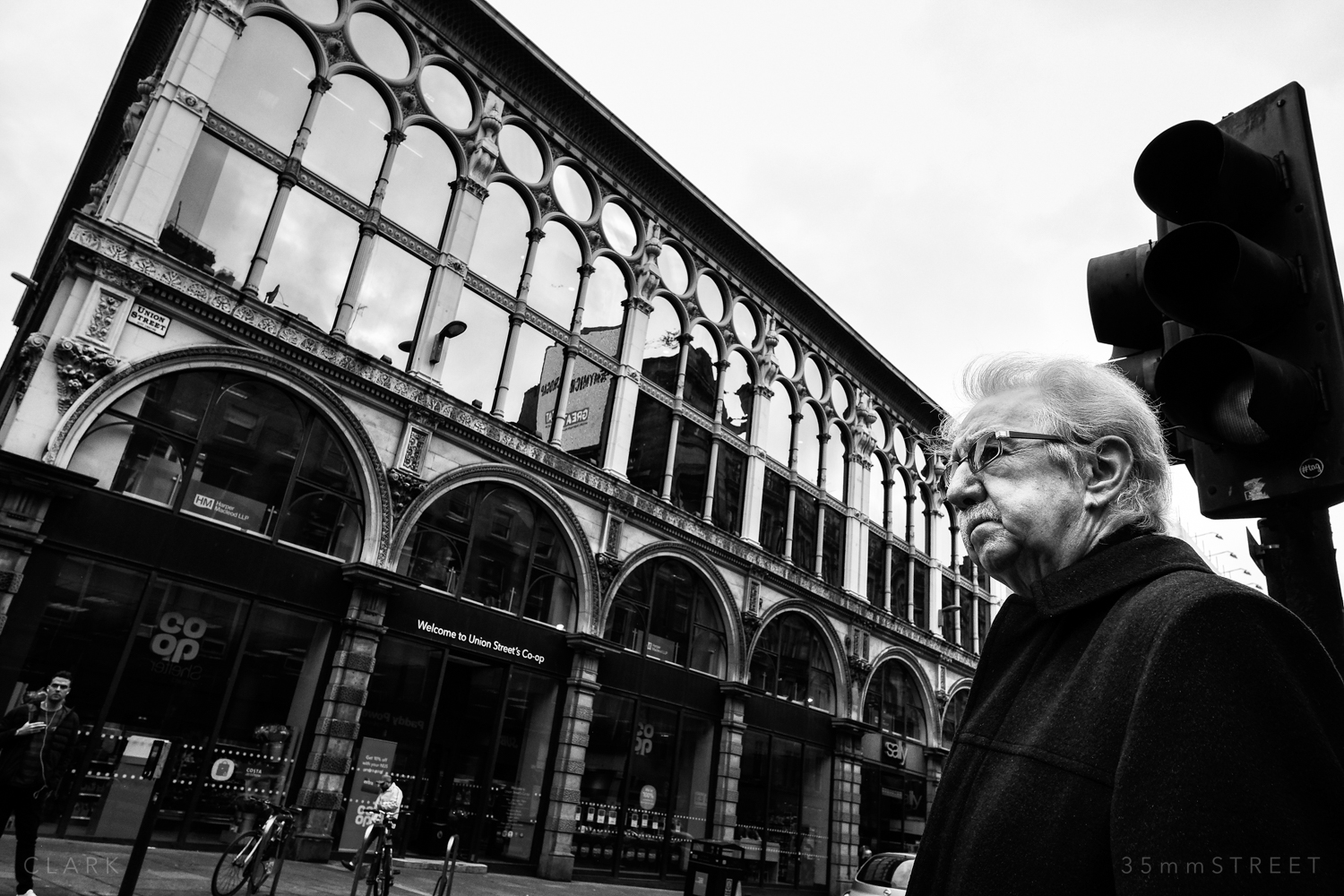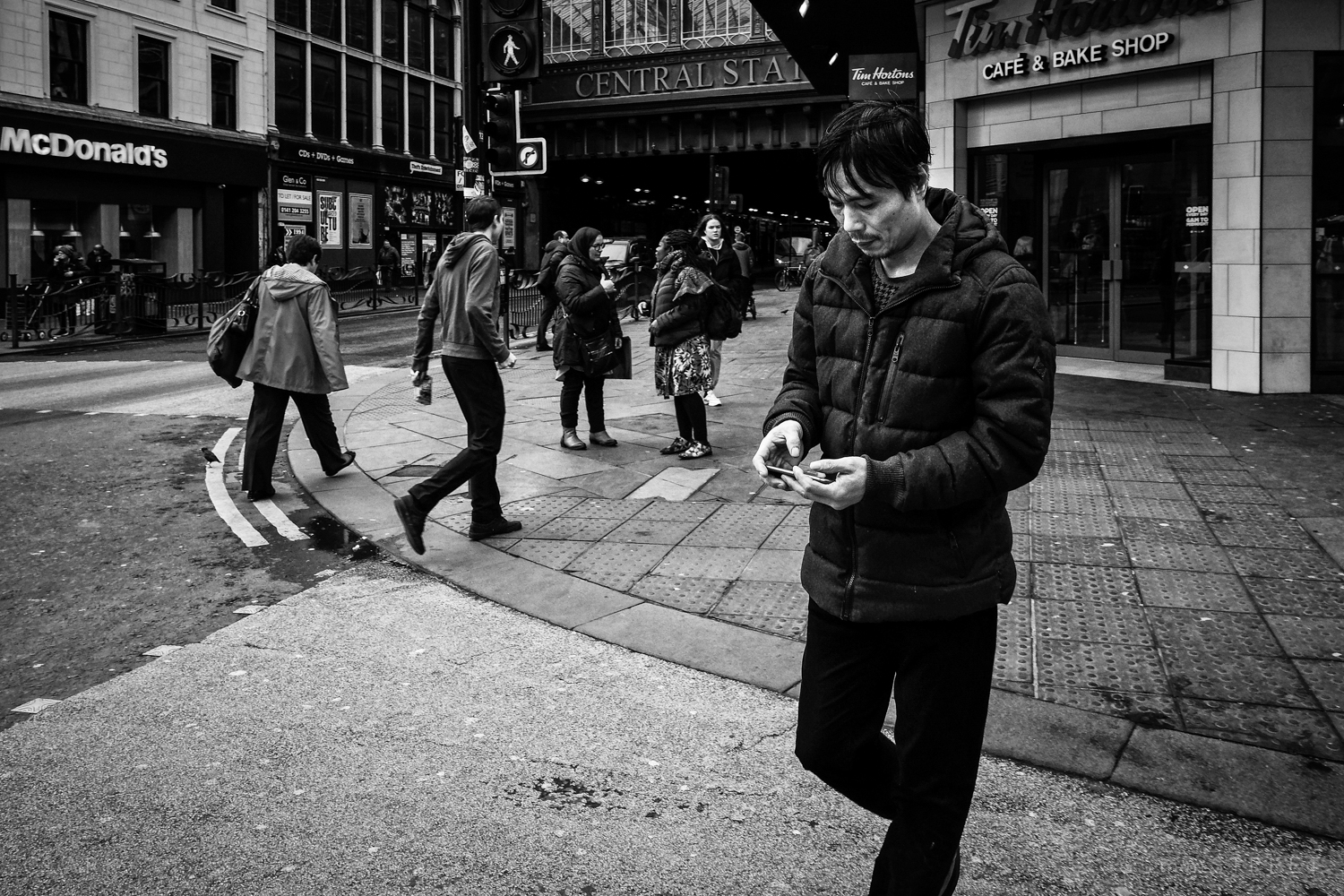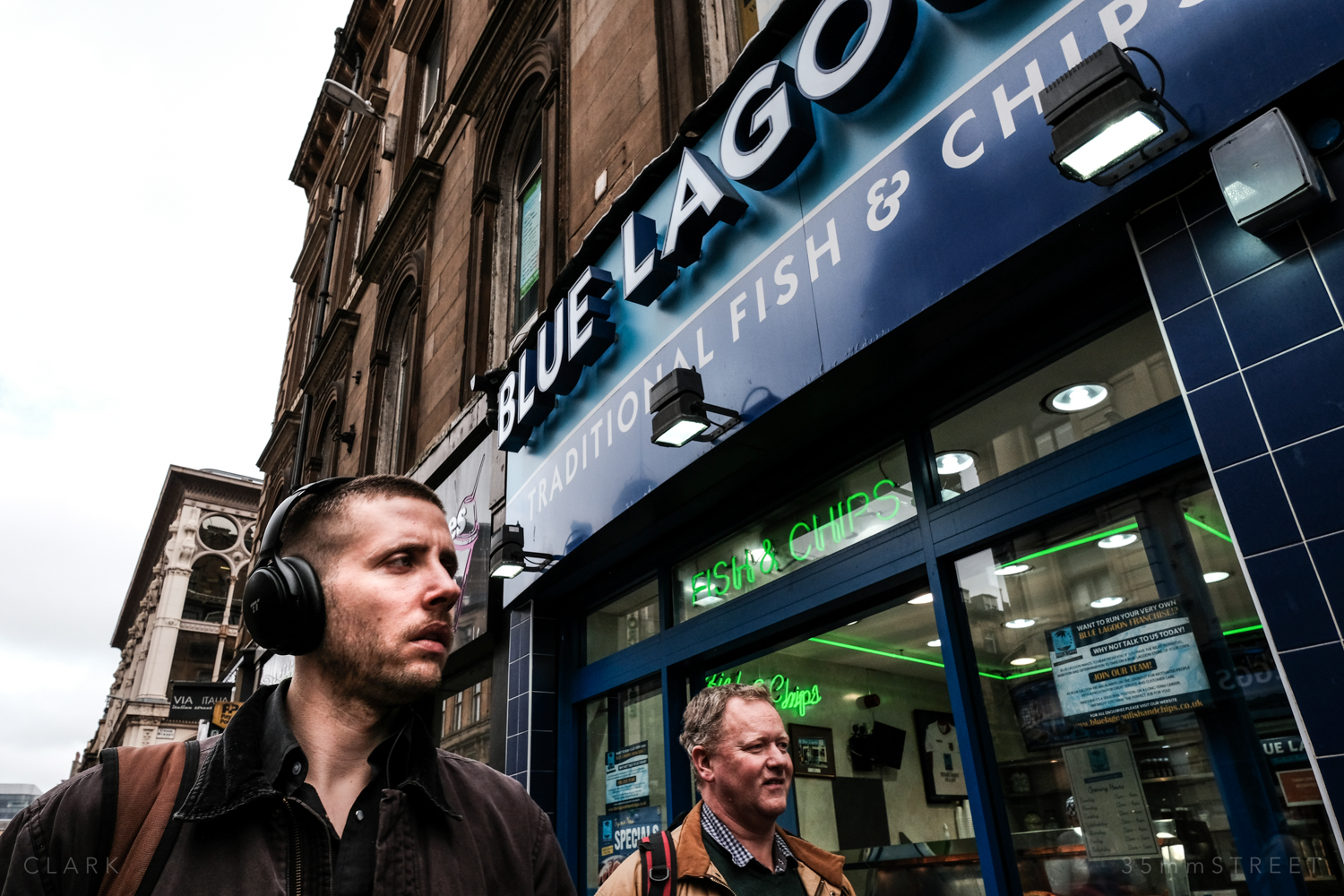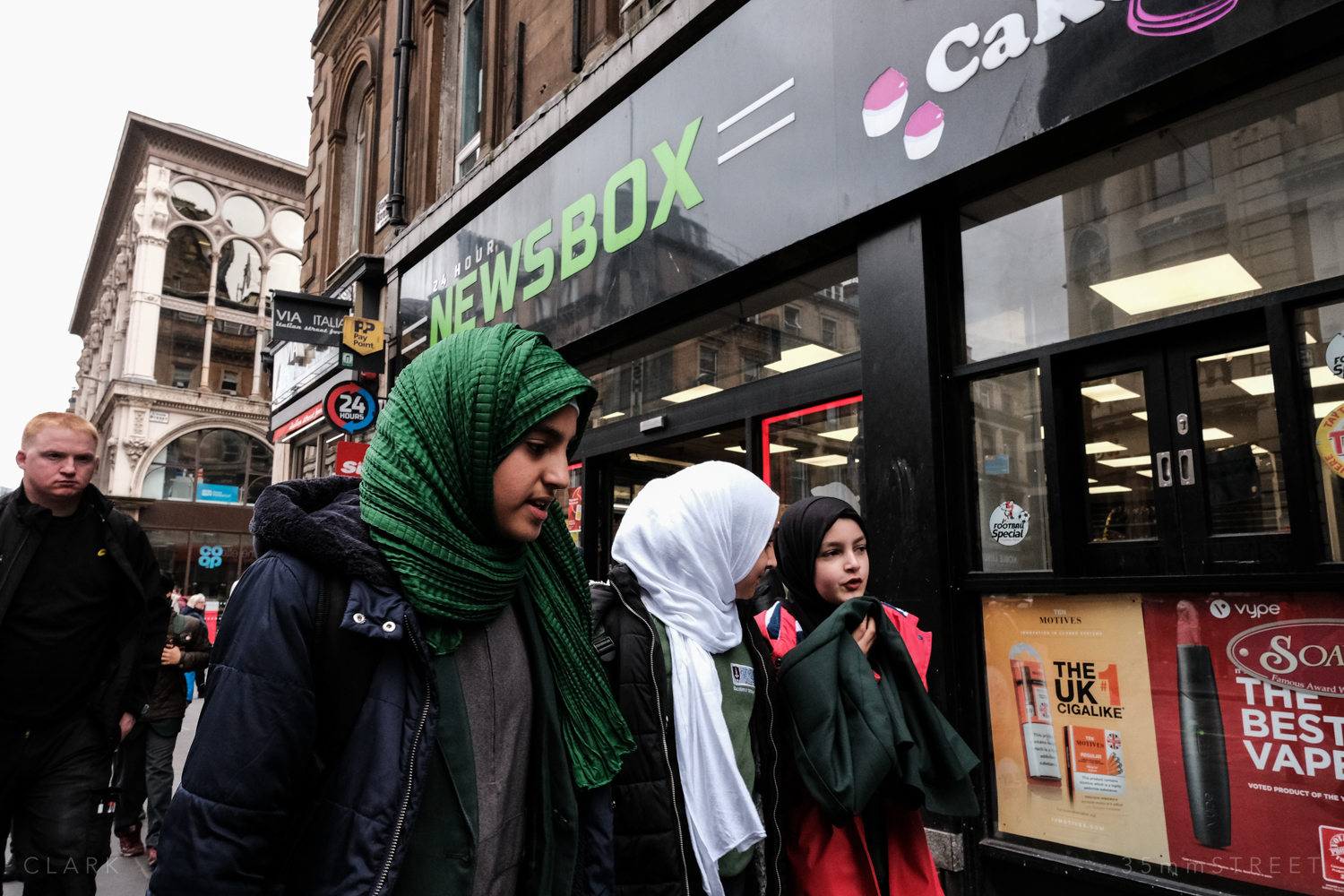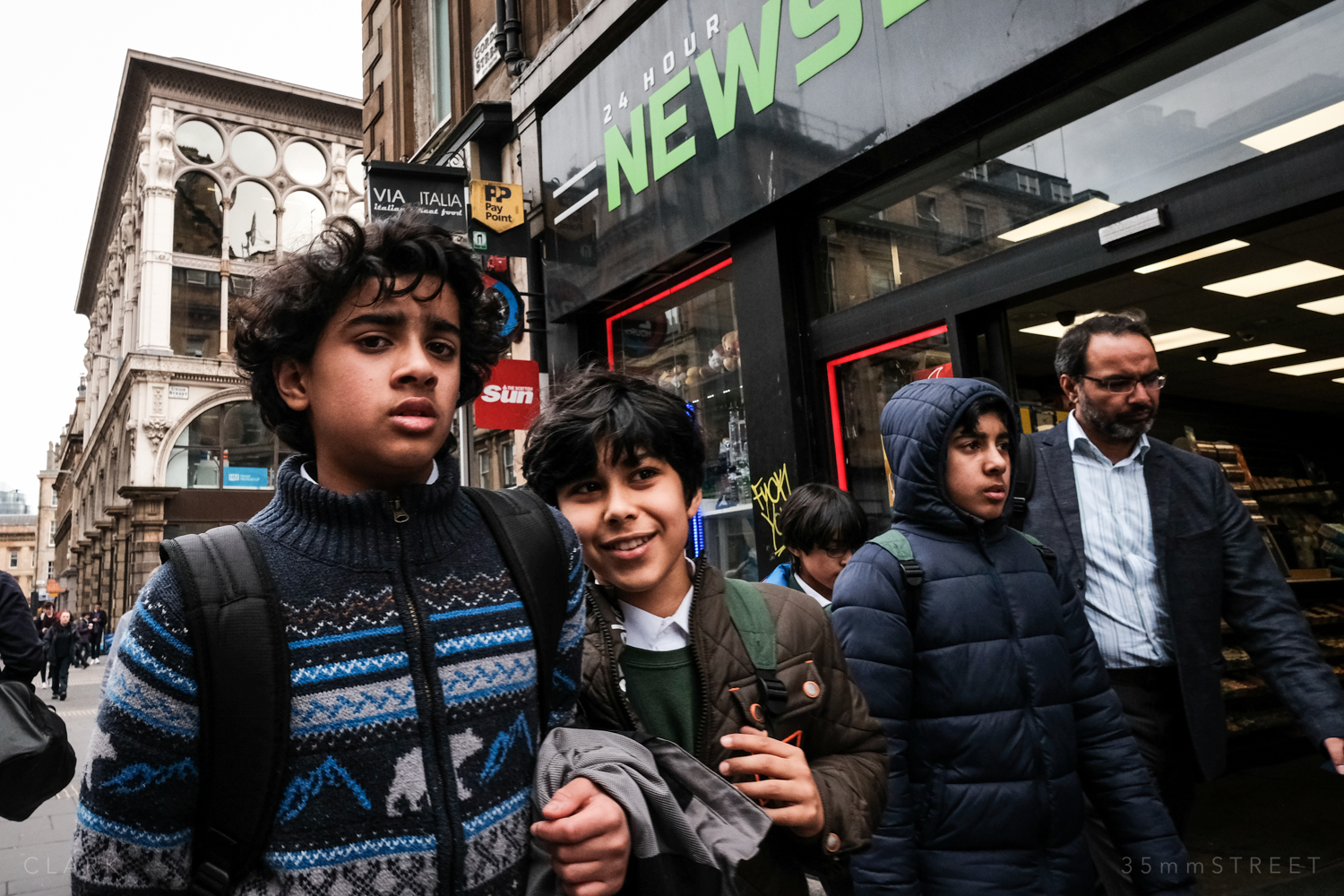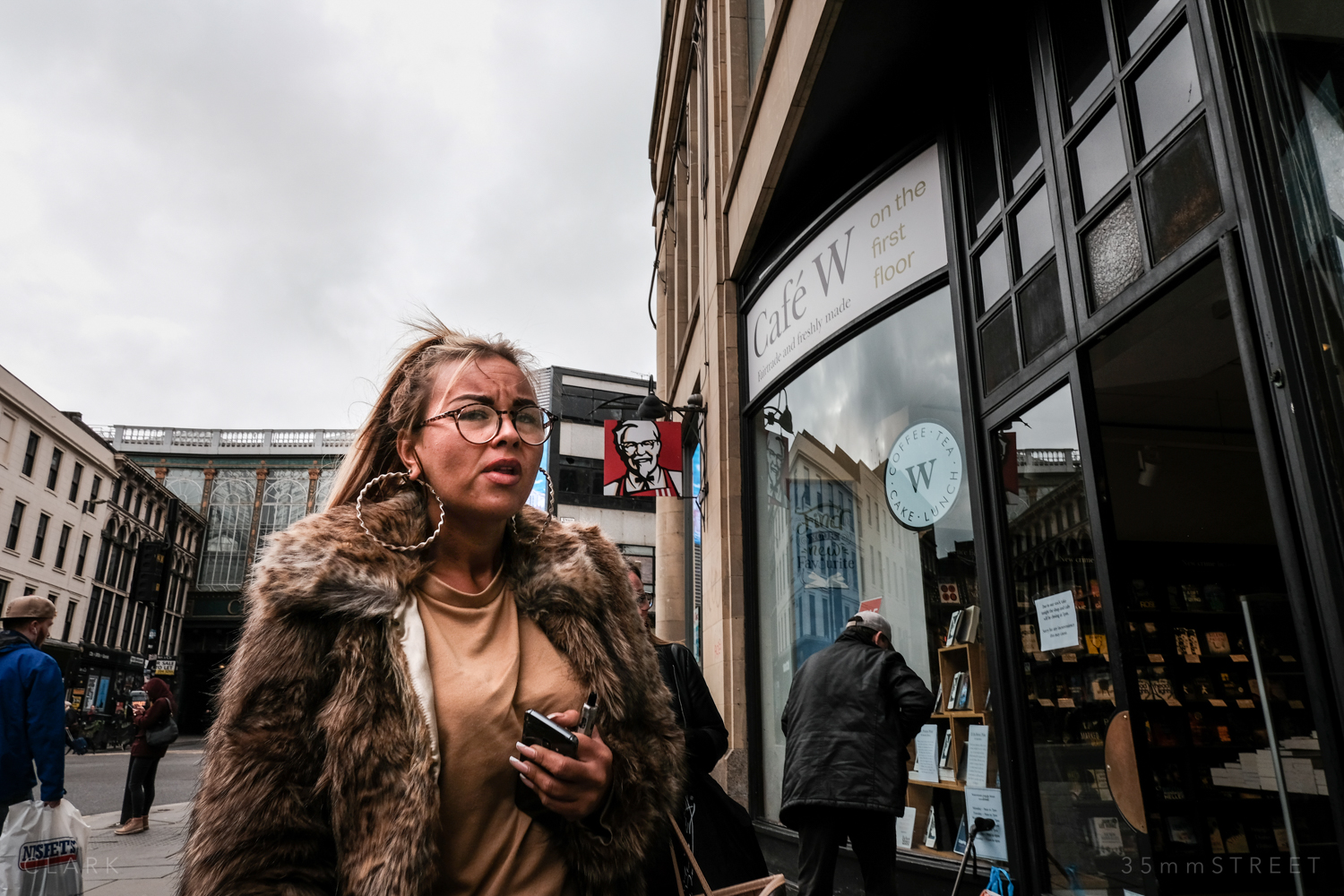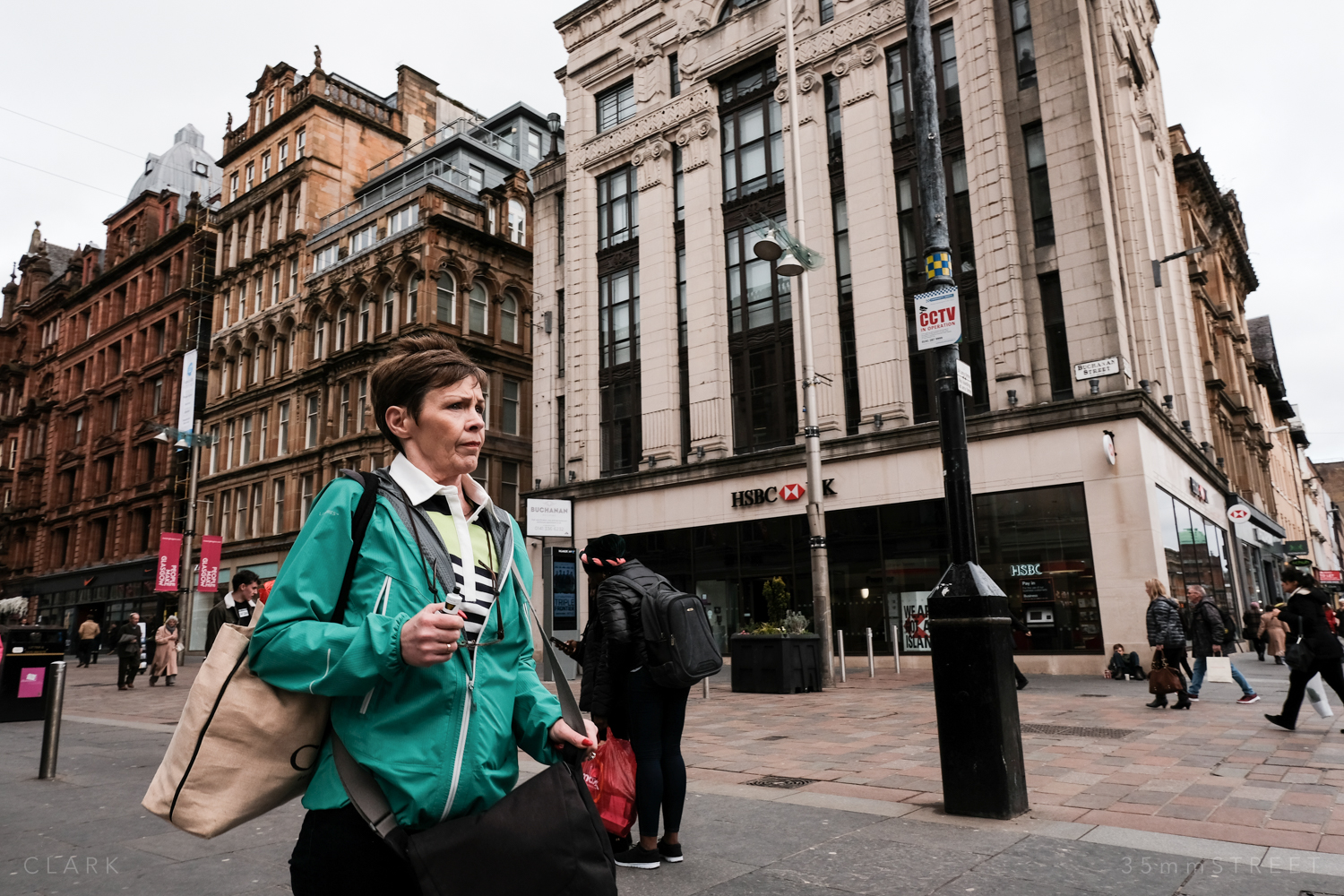There is a sweet spot in wide angle street photography lenses. Just like the push and pull of the exposure triangle, there are trade-offs with different focal lengths, especially when zone focusing. The compromise of getting in really close, but having lots of depth of field to add a bit of forgiveness when judging the distance between your camera and the subject. If this isn’t making much sense, you might want to go and read my post on How To Zone Focus first and then come back here.
I love a 28mm lens (full frame equivalent) when I’m zone focusing, which is why my Fuji Fuji X70 is one of my favourite cameras for this type of street shooting. I love the classic 35mm focal length when I’m using a viewfinder on a camera like the X100F, but when shooting from the hip, that extra depth of field the 28mm gives me can be the difference between coming home with lots of good shots or coming home with just a few.
I get that 28mm can be a bit wide for some photographers on the street (especially beginners) because it forces you to get in close. But it just works in so many different levels. At f8 and focused to 6’, everything between 5’ and 8’ will be in focus (possibly even more). At f11 and focus set to 5’ I can get everything in focus between 4’ and 8’ and those are good distances to work at with a 28mm lens
I hit the street the other day with the 16/2.8, a tiny wide-angle gem of a lens. But as soon as I started taking pictures, I was reminded of just how much difference a few millimeters can make at the wide end, which would mean next to nothing on a telephoto lens. The Fujinon Super EBC XF 16mm f2.8 R WR (to give it it’s the full title) is a full-frame equivalent to a 24mm, but those 4mm between 24mm and a 28mm feels huge when you’re trying to judge how big in the frame someone will be. The difference of a second or two when someone is walking toward you is massive, and if you wait too long or if the camera has any kind of lag between shutter press and actual shutter release, the moment has gone. But press too soon and the subject appears way smaller in the frame than you can imagine. It takes a bit of practice and there is very little wiggle room, so I’ll be heading back out soon to try to get it right.
Another problem is the urge to point the camera up. I was using the X-Pro2 and it doesn’t have a tilt screen, so it’s complete guesswork. When I’m out with my X70 (28mm equivalent), I can pull the flip screen out just a fraction, which is just enough to make a rough composition. I don’t like tilt screens on my rangefinder style cameras, but if the X-E3 had one I’d probably buy it for street (even though it doesn’t have a D-Pad on the back).
But check those leading lines when shooting building from a slightly lower angle. Epic!




